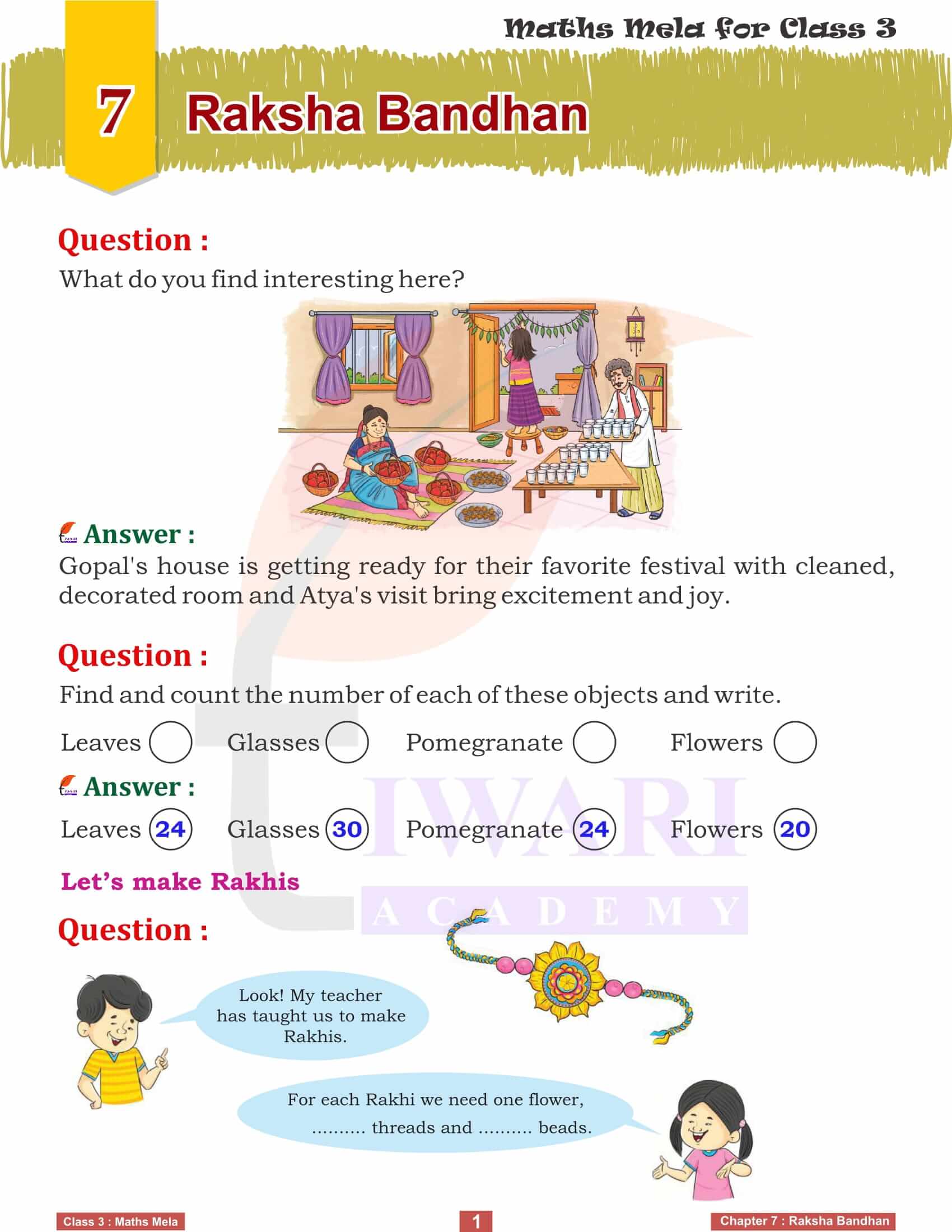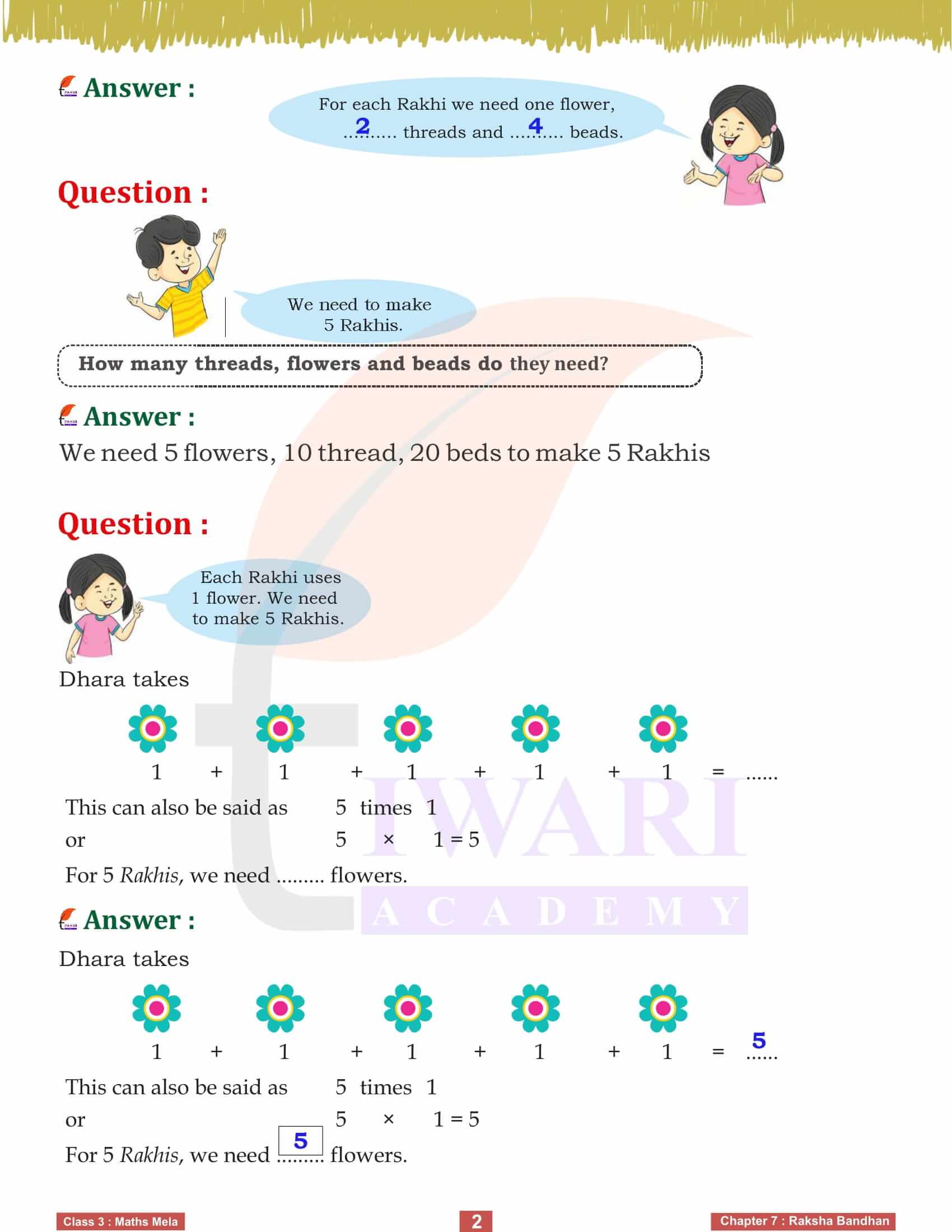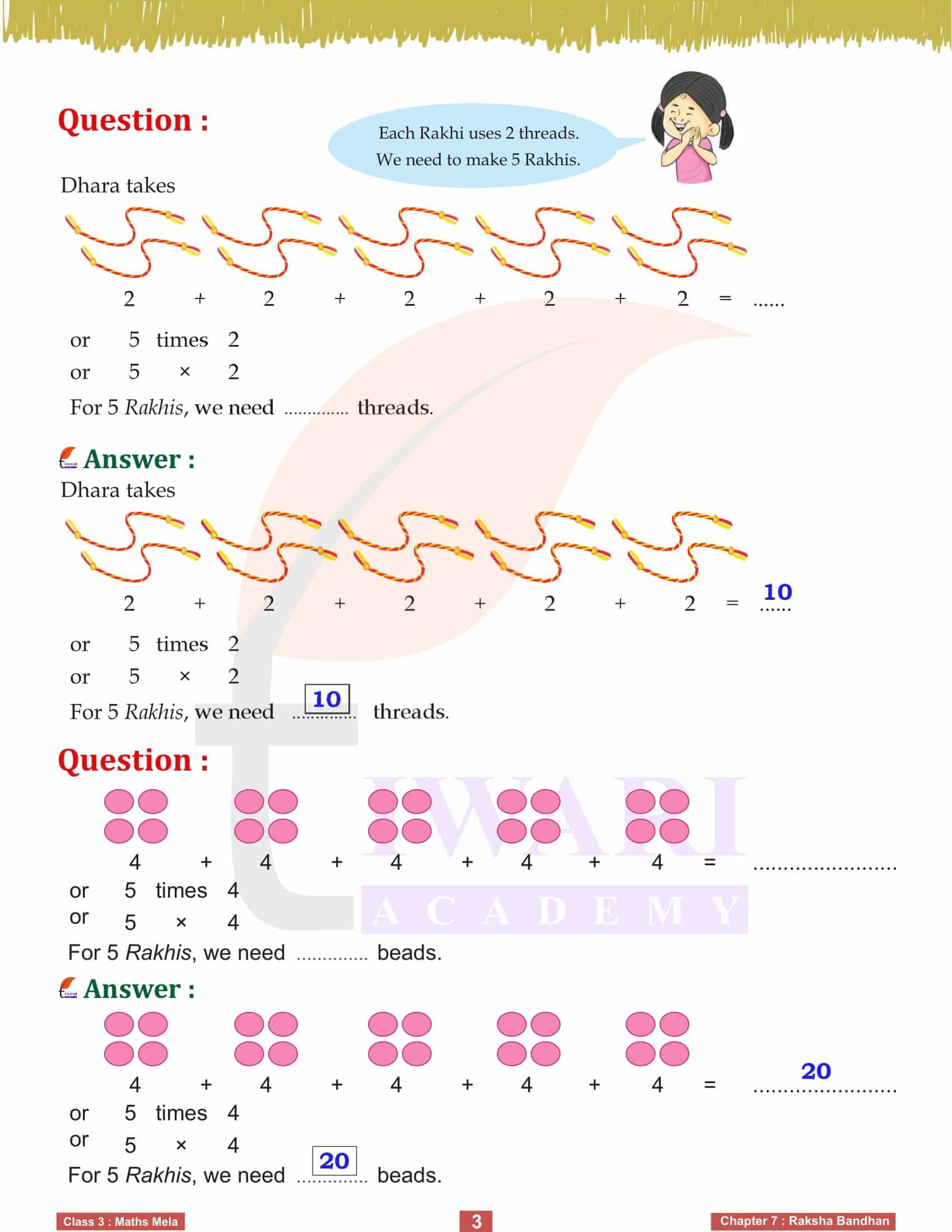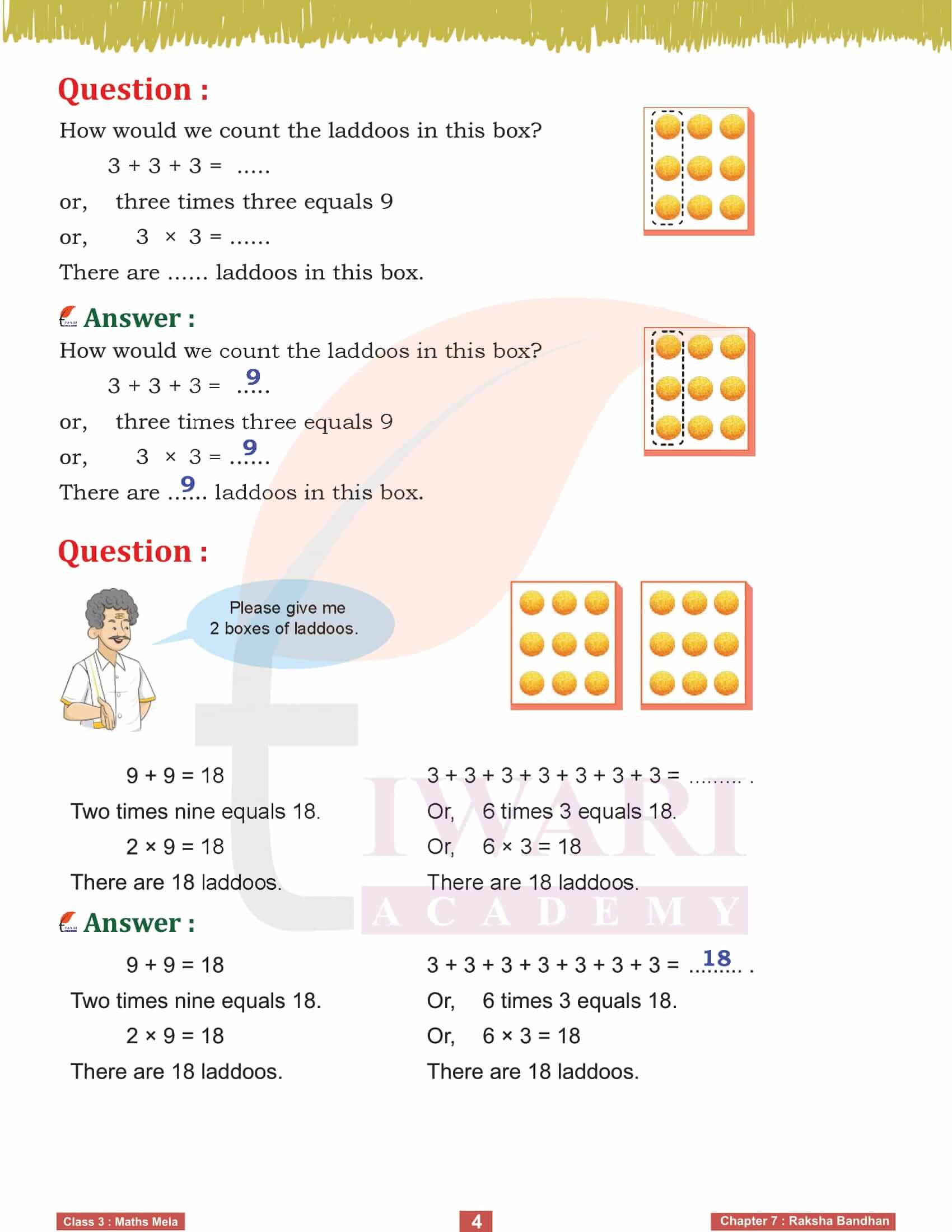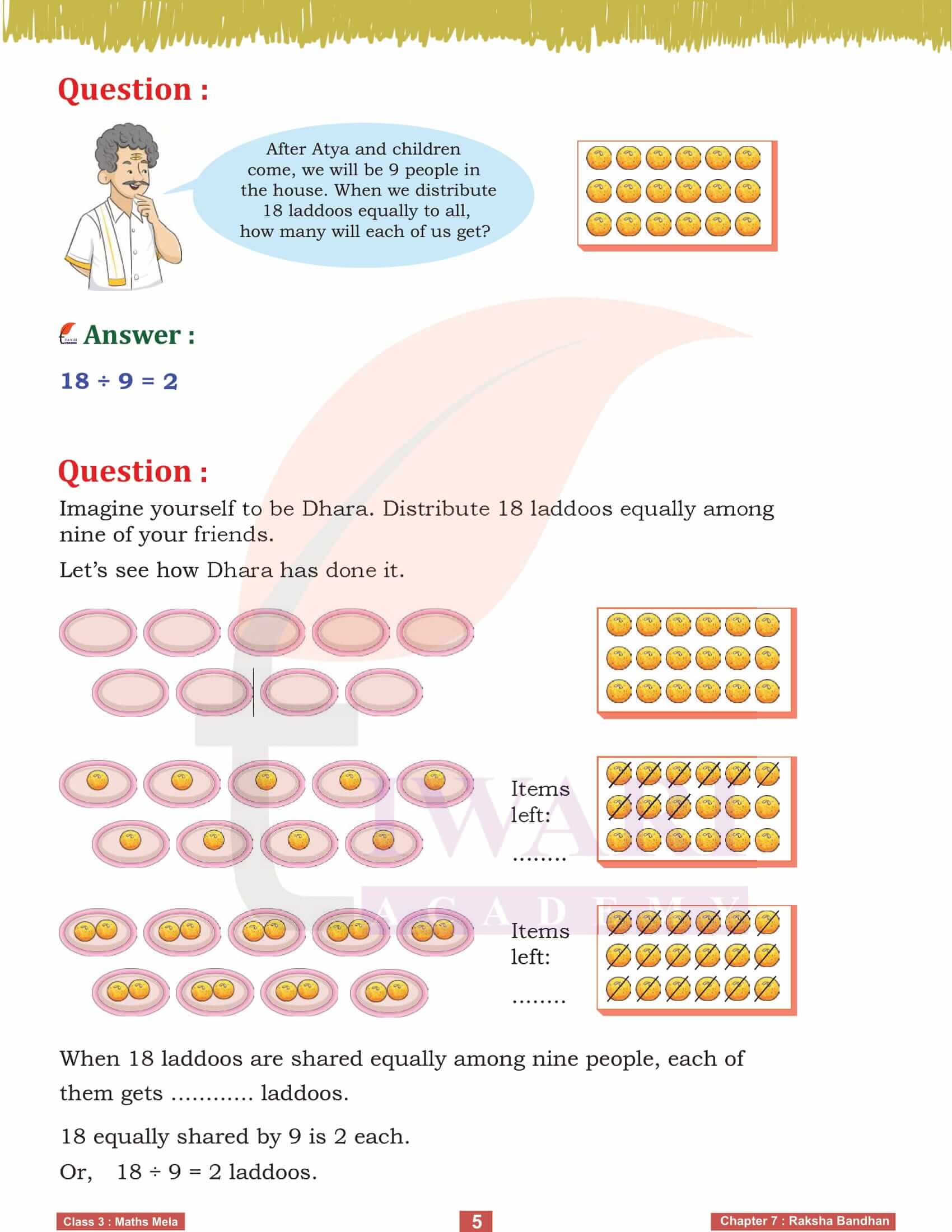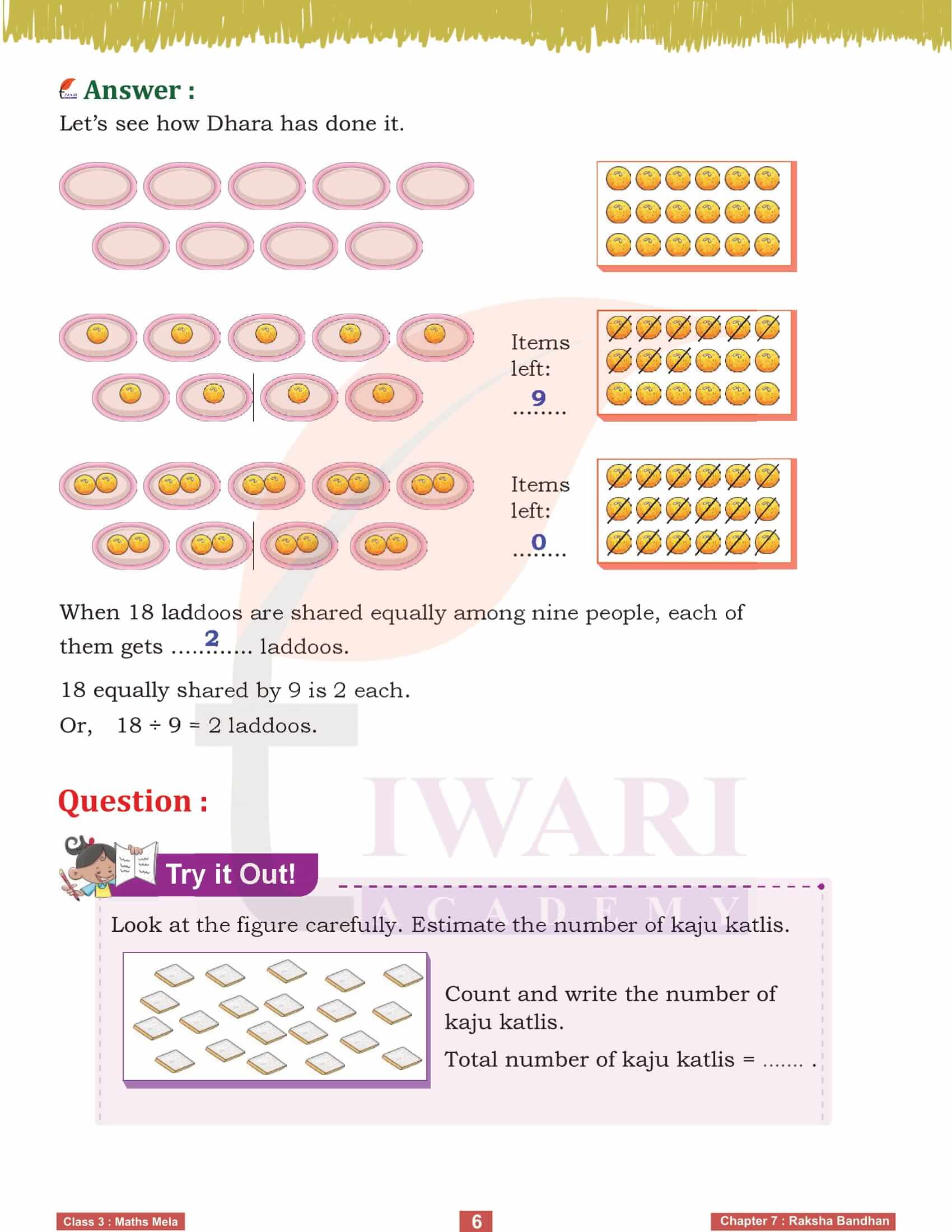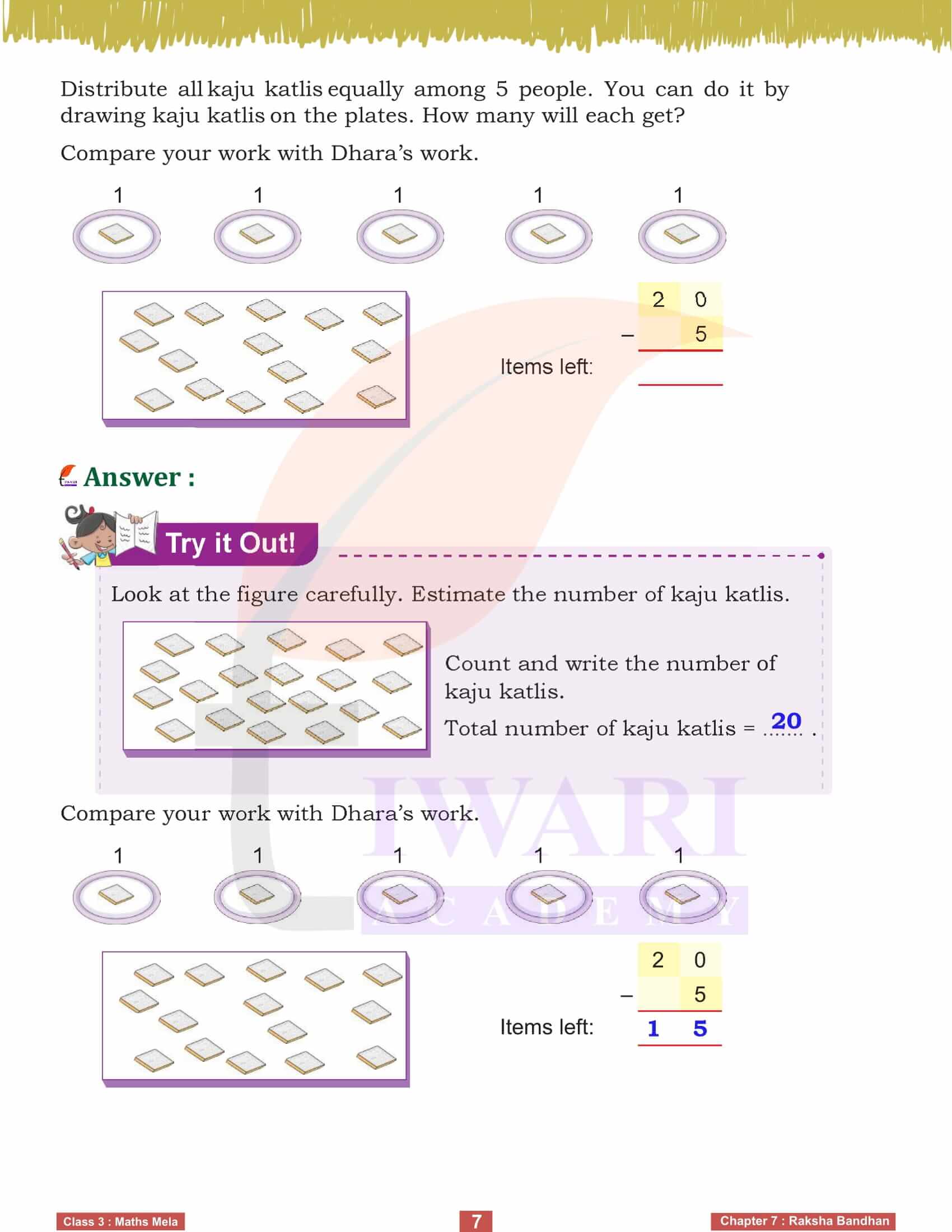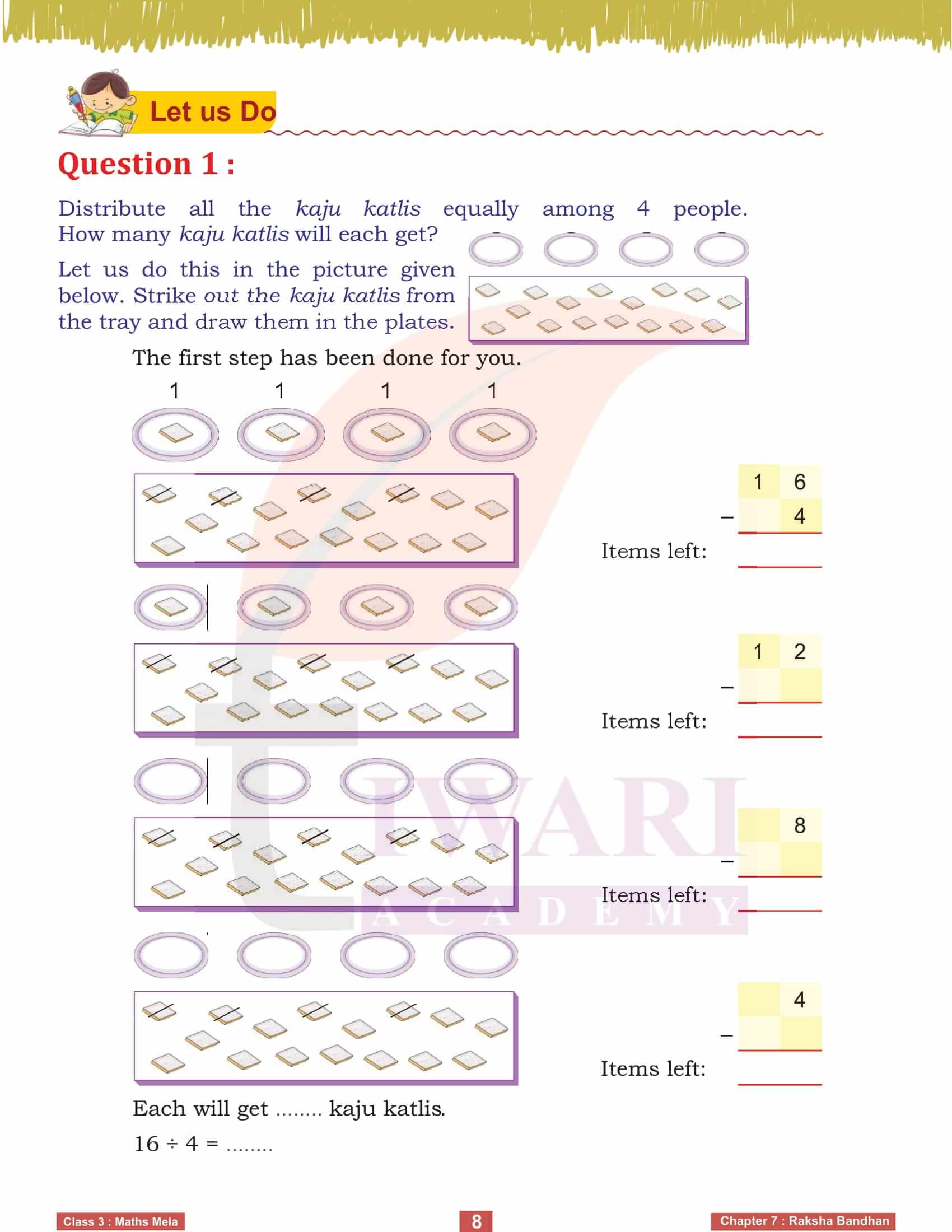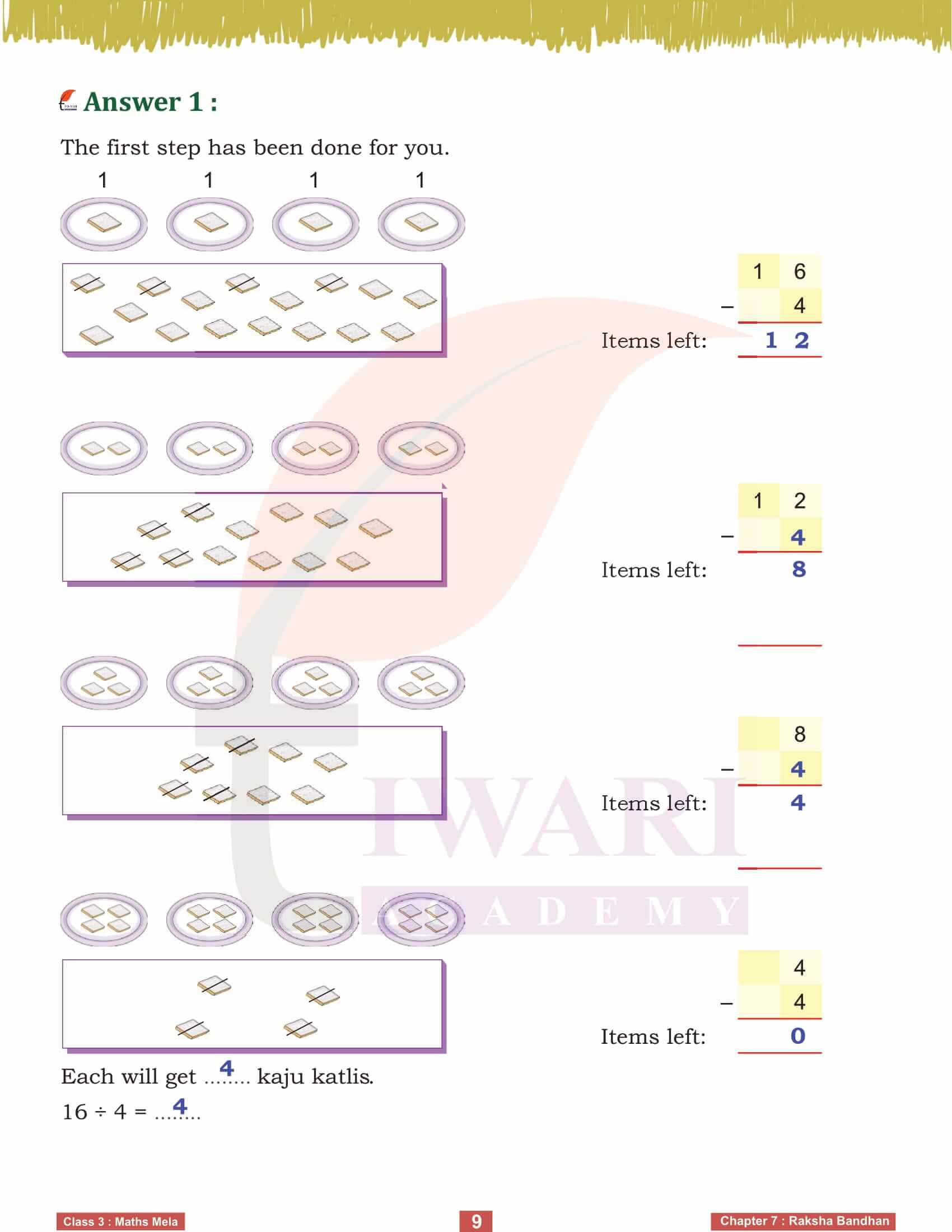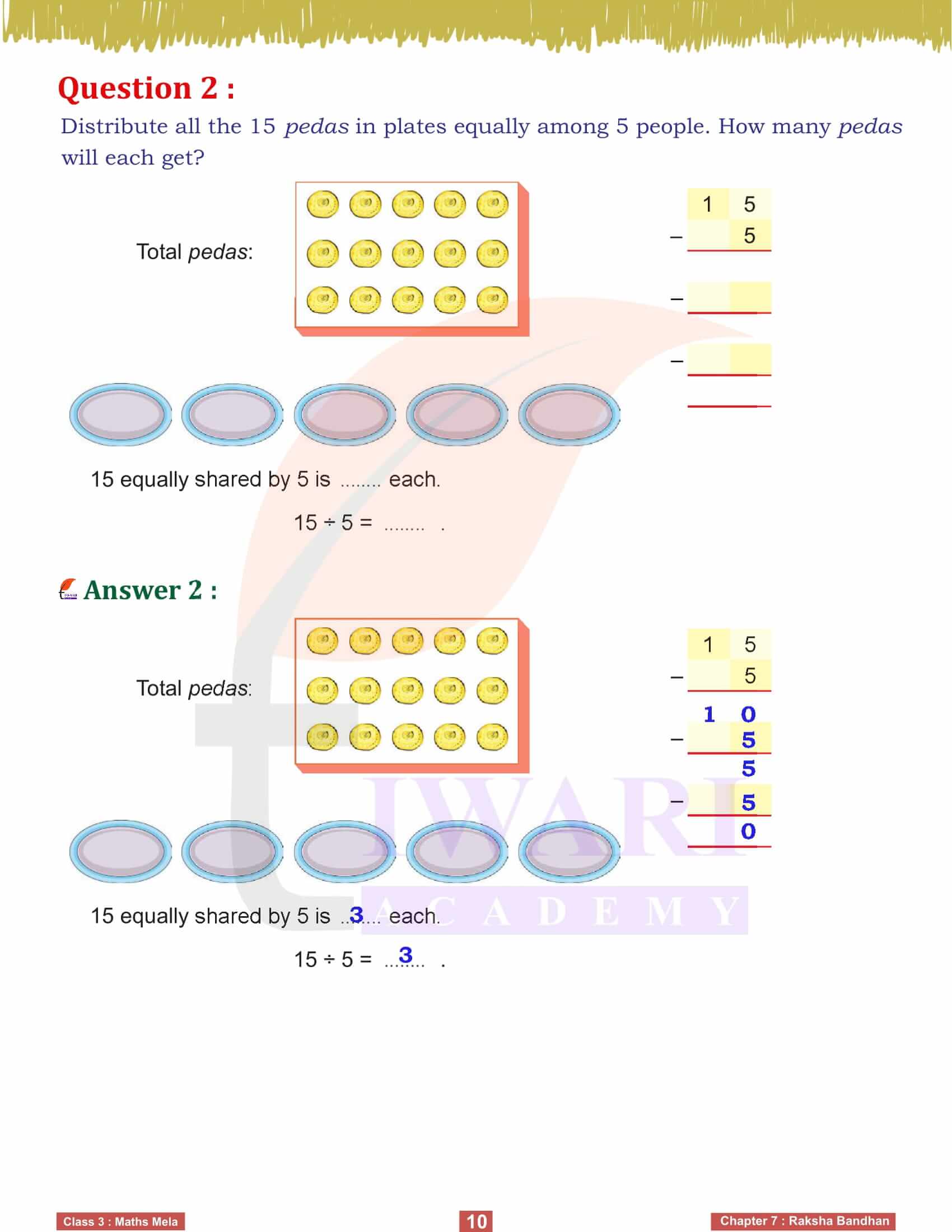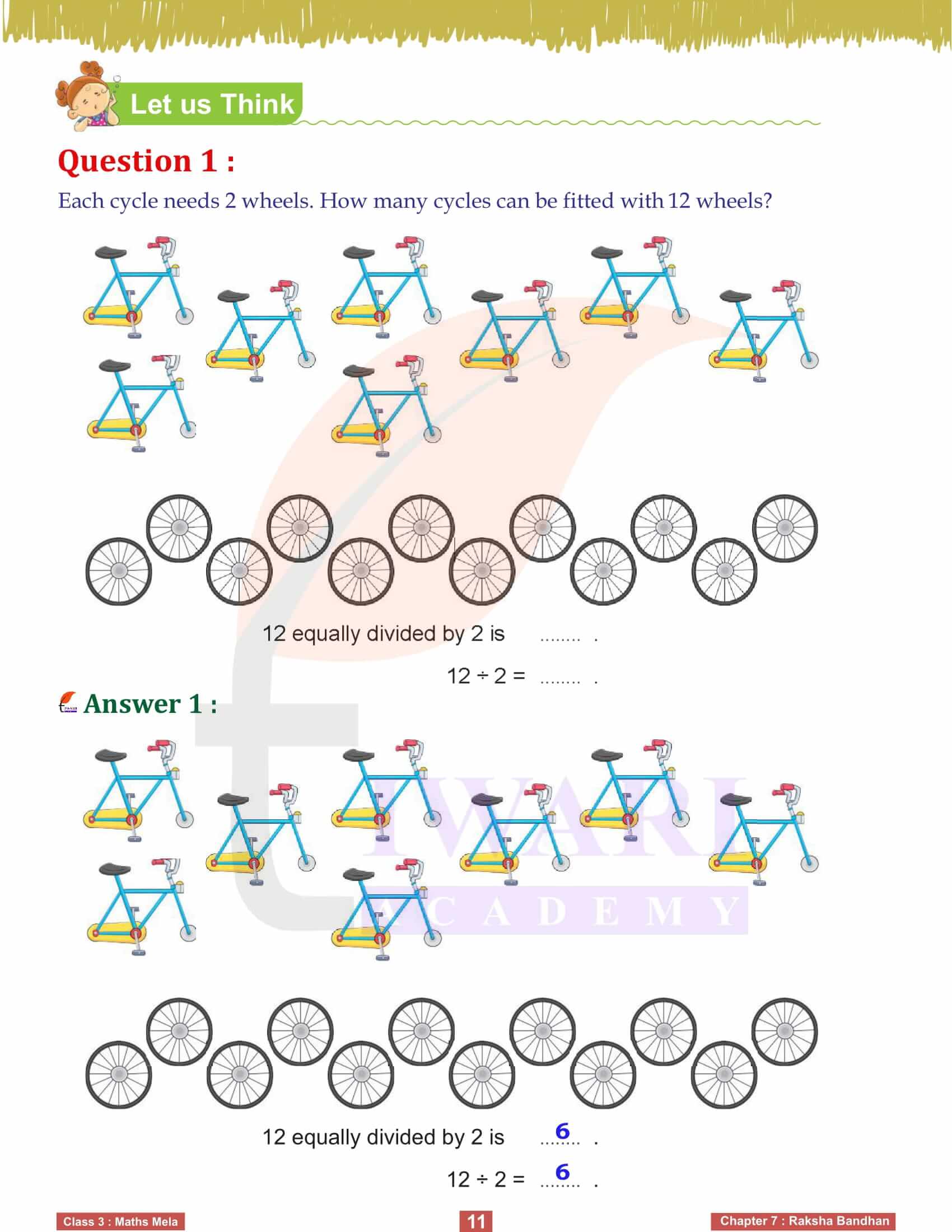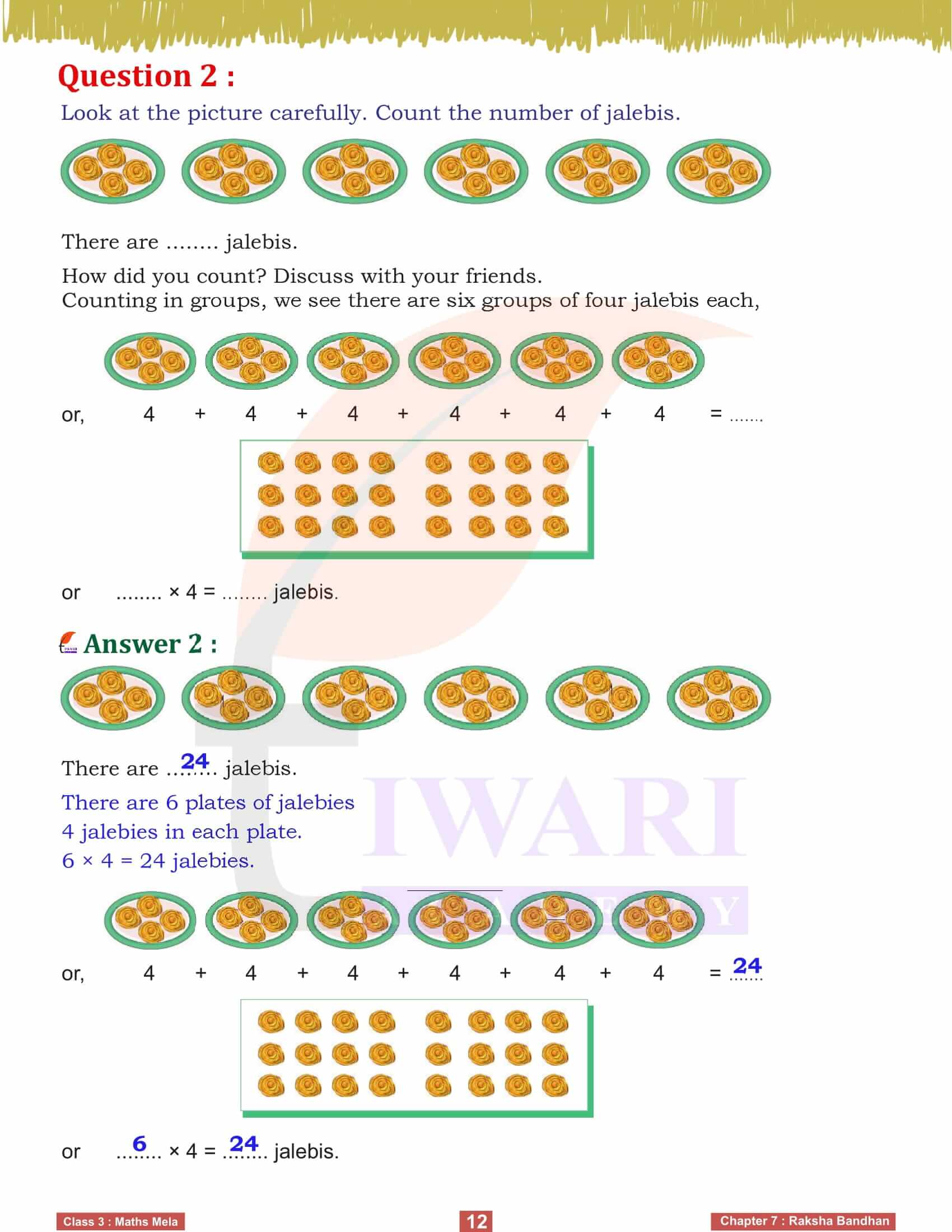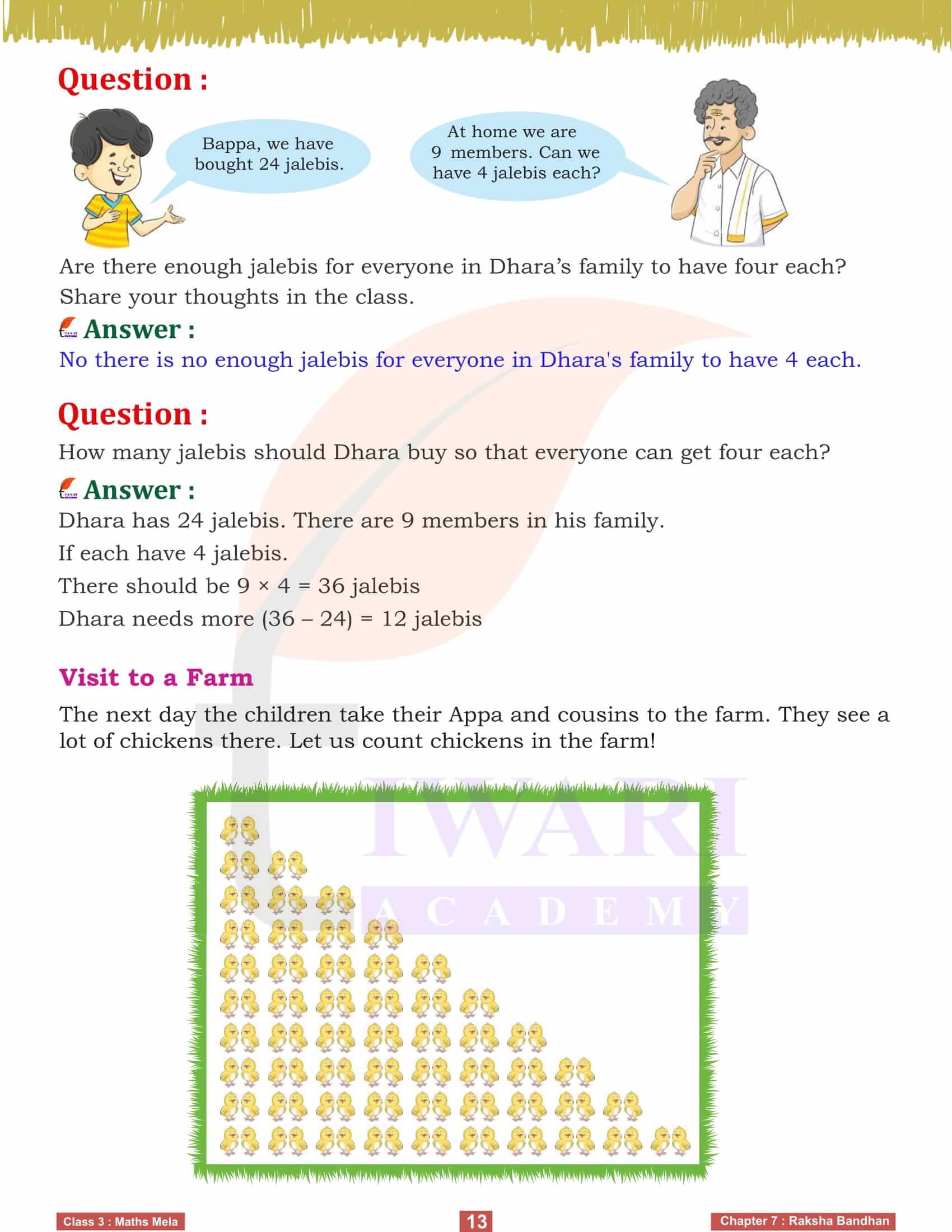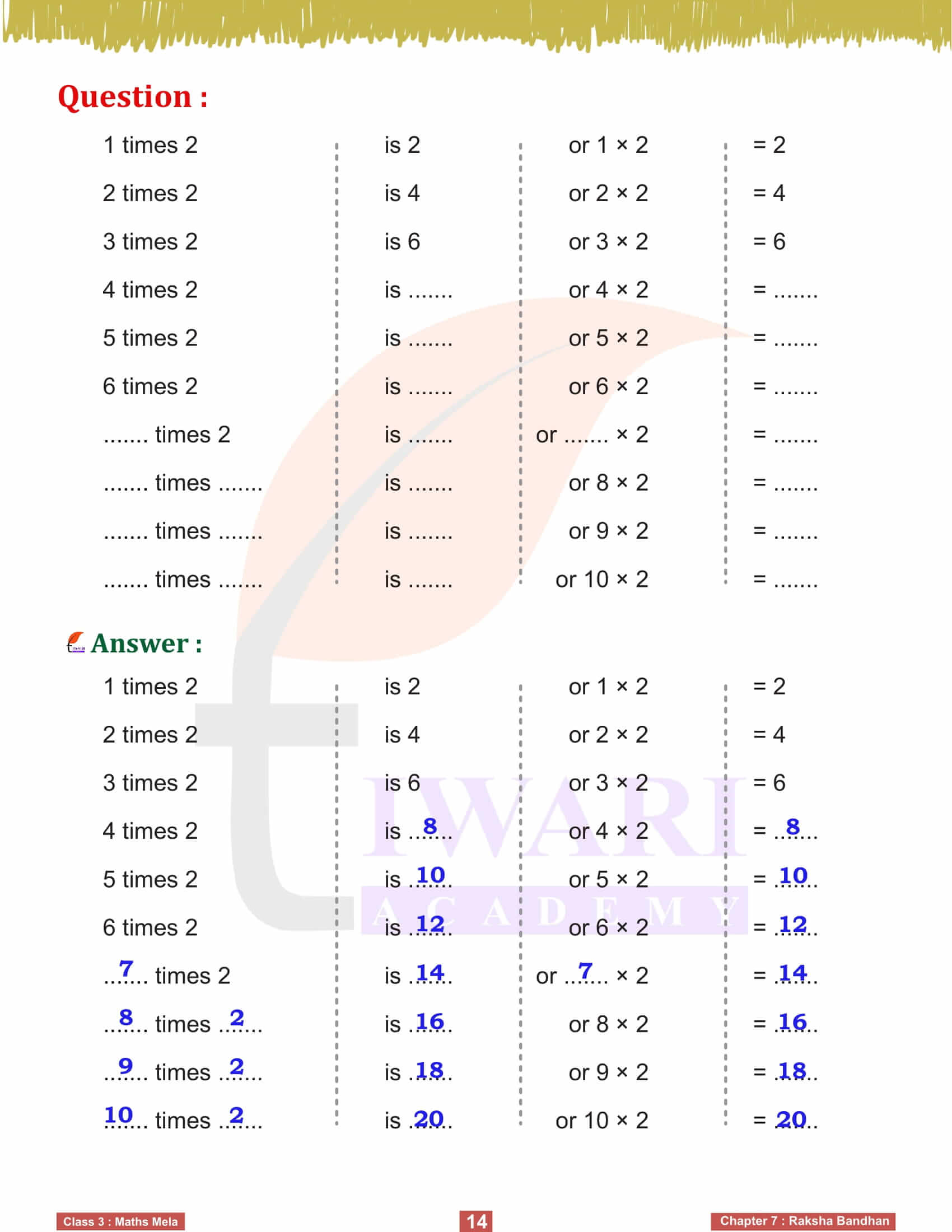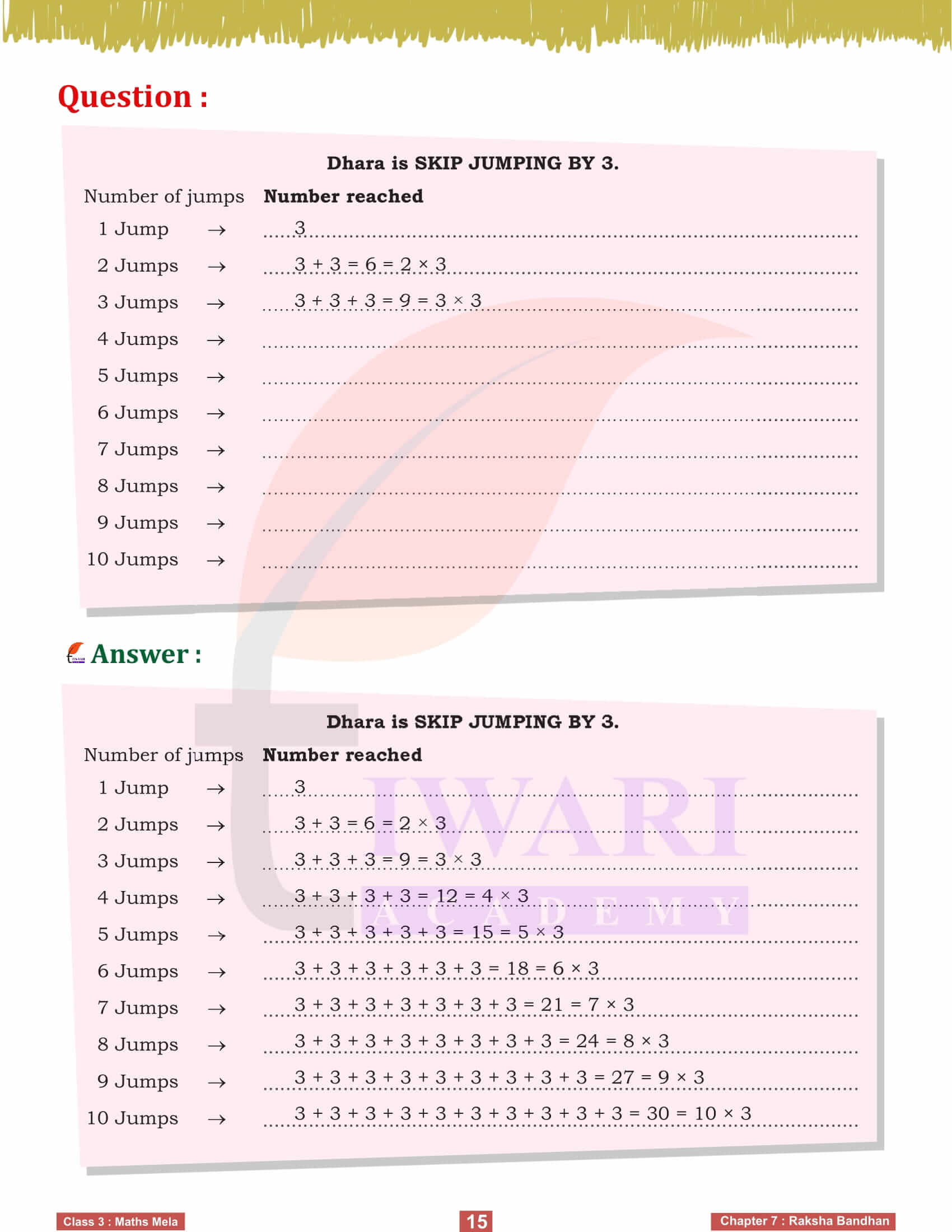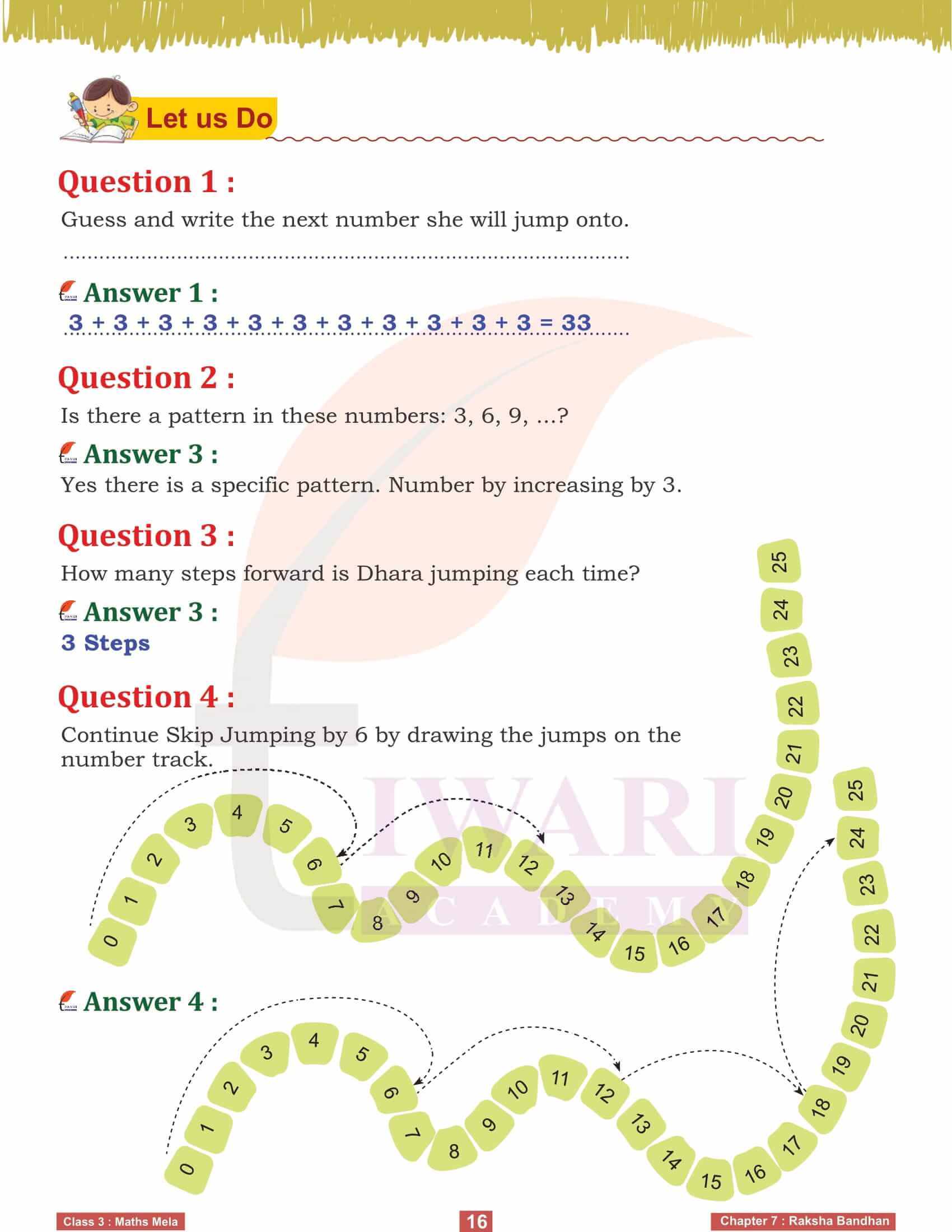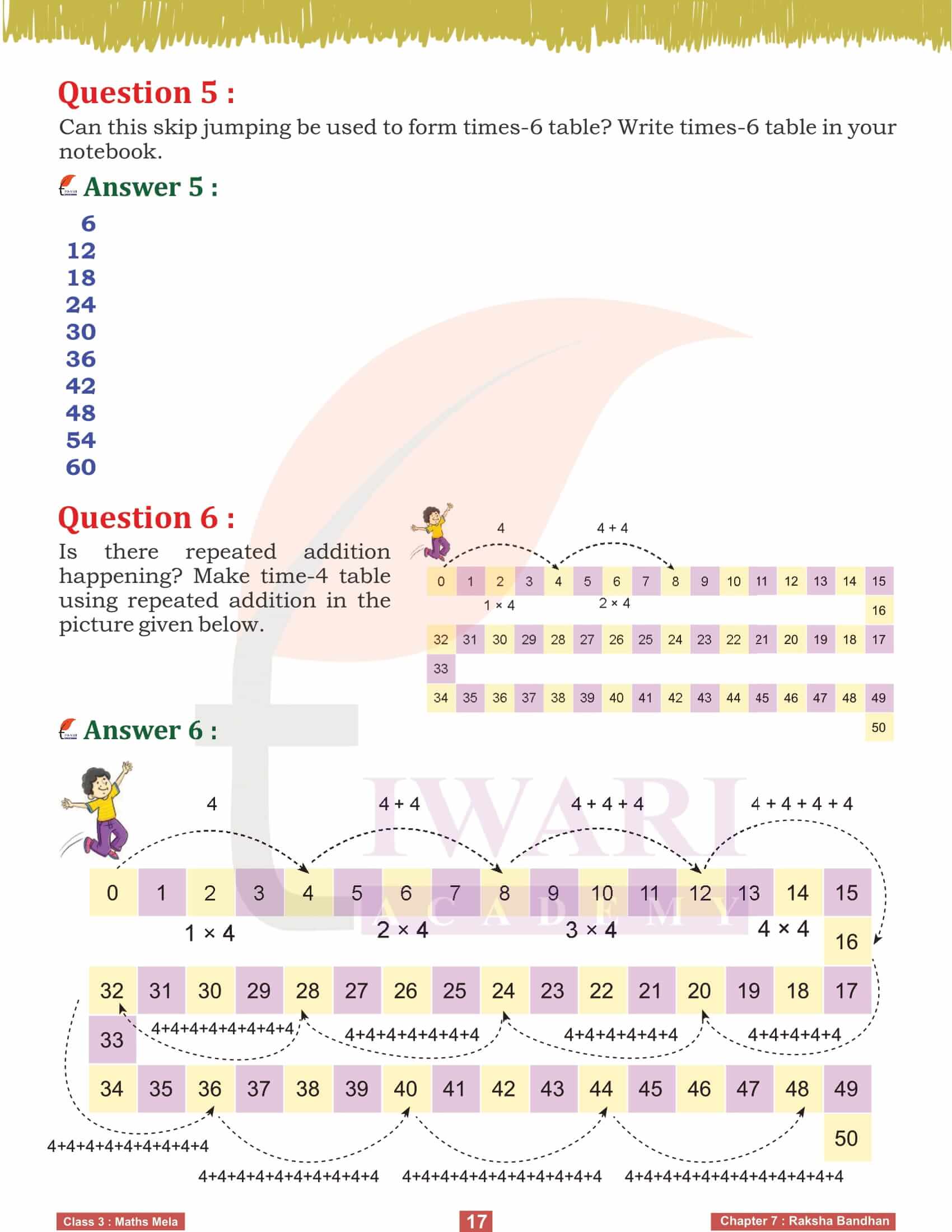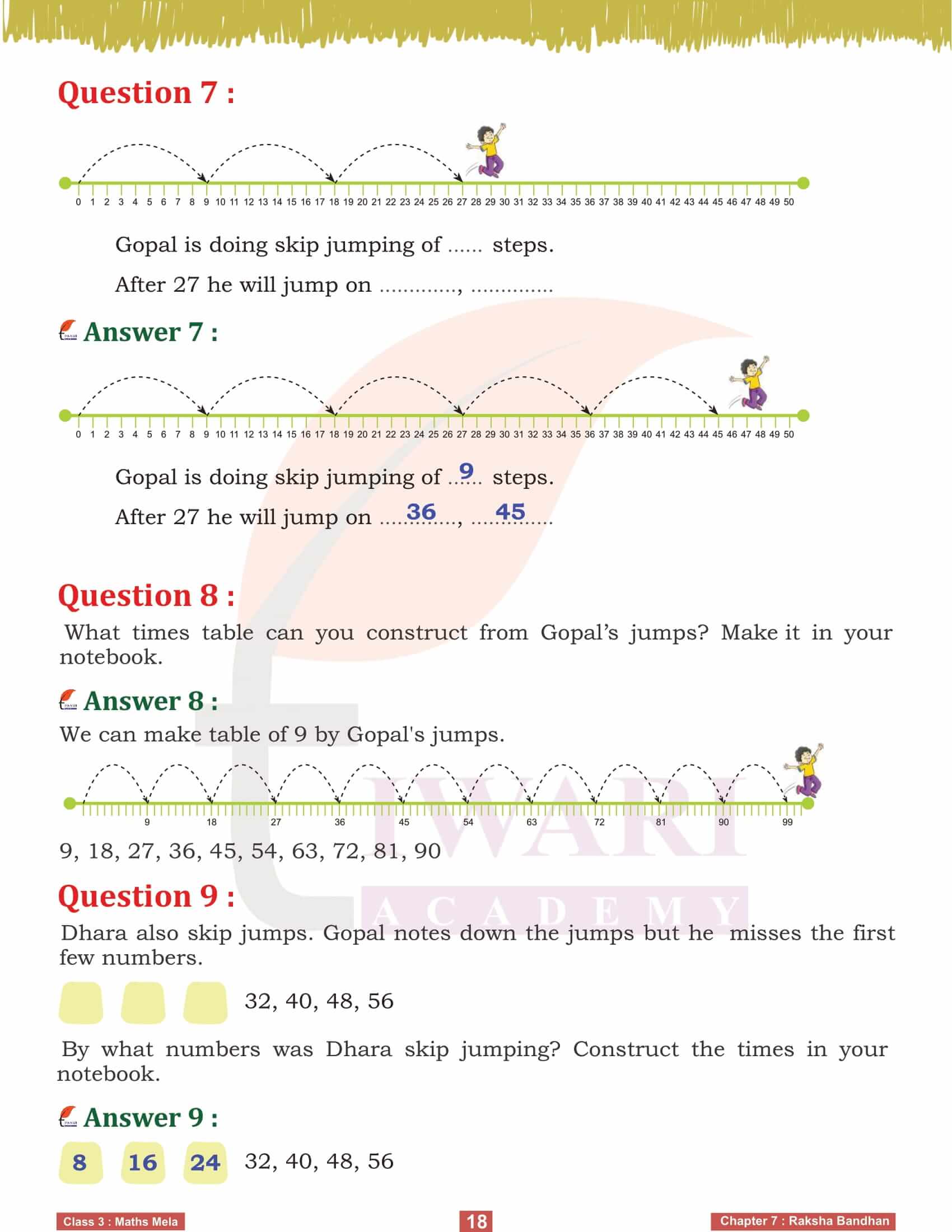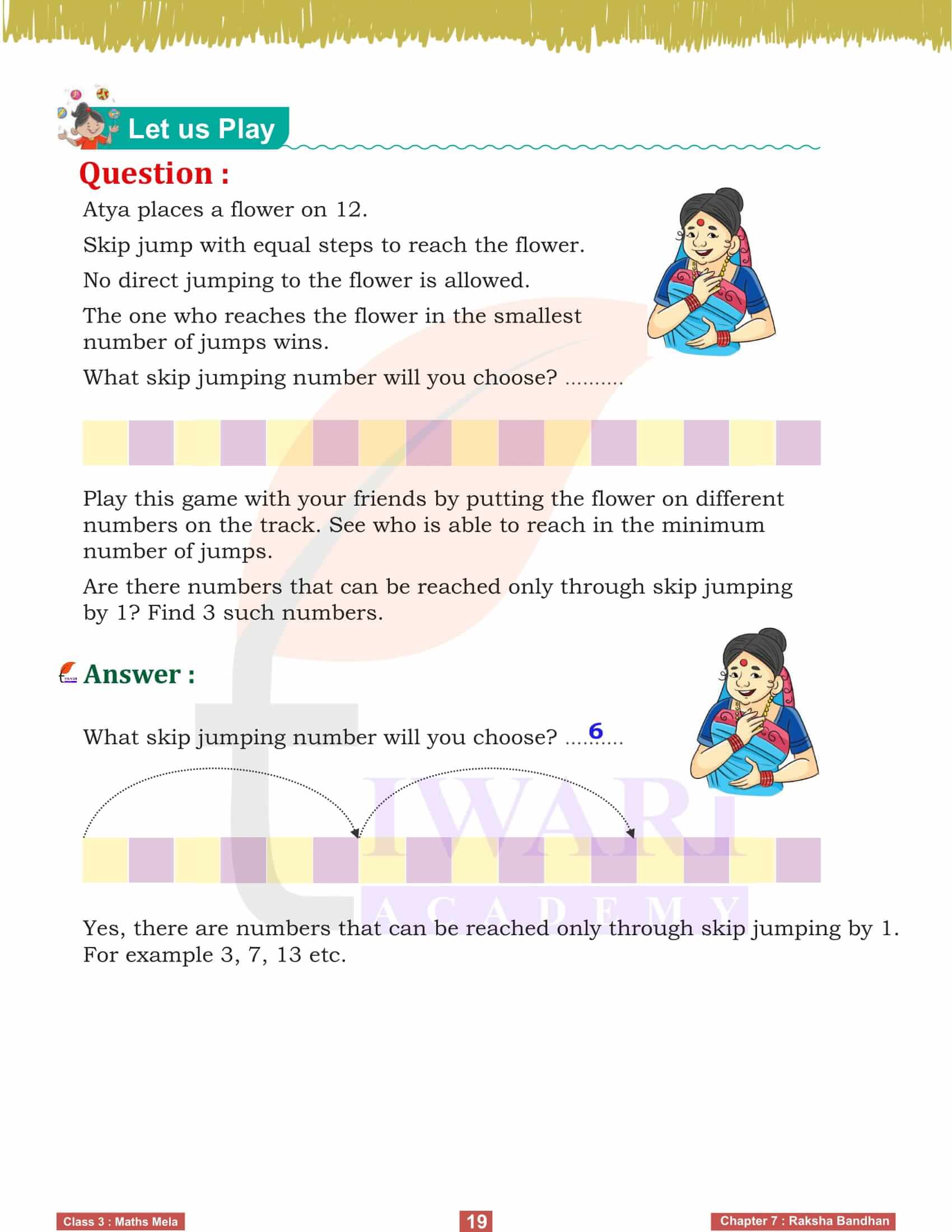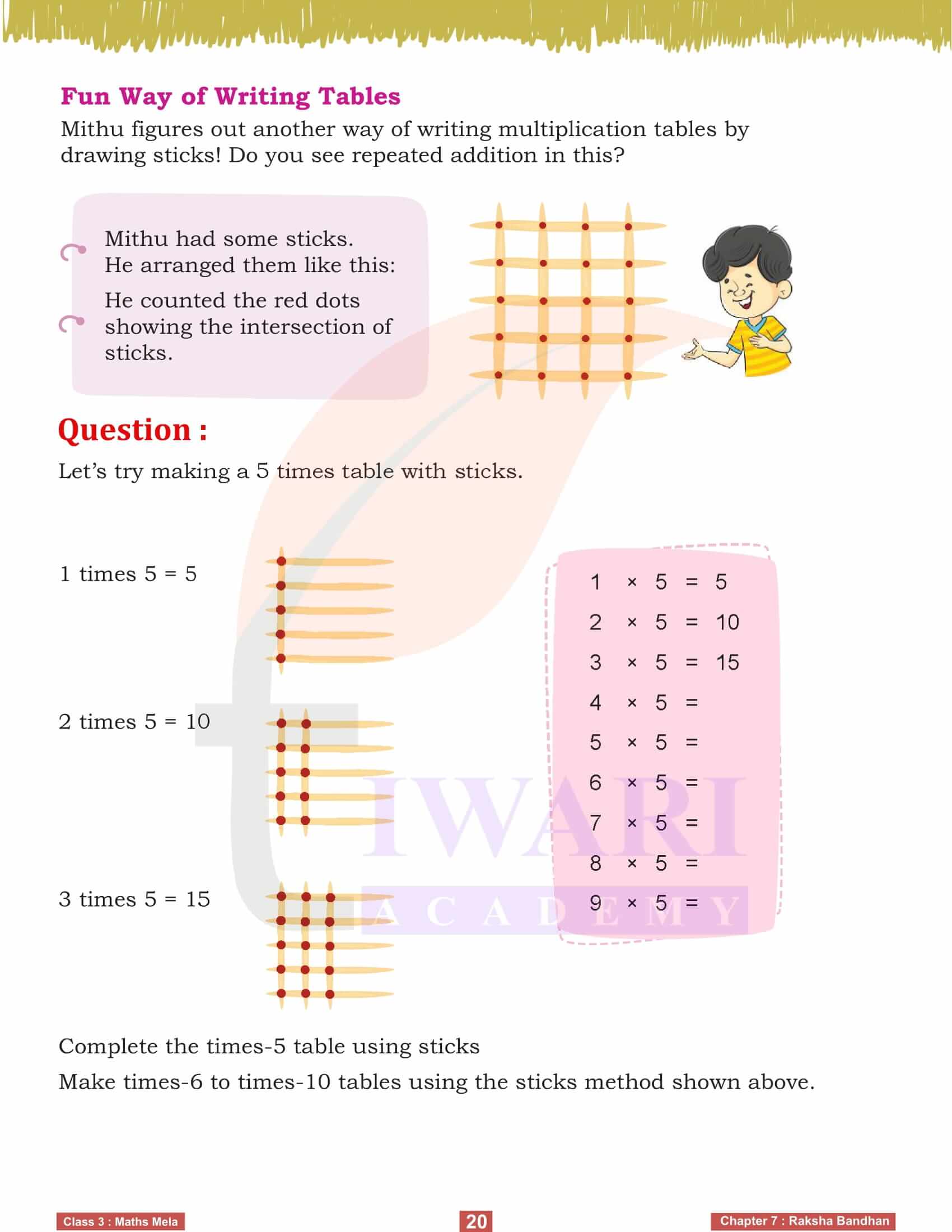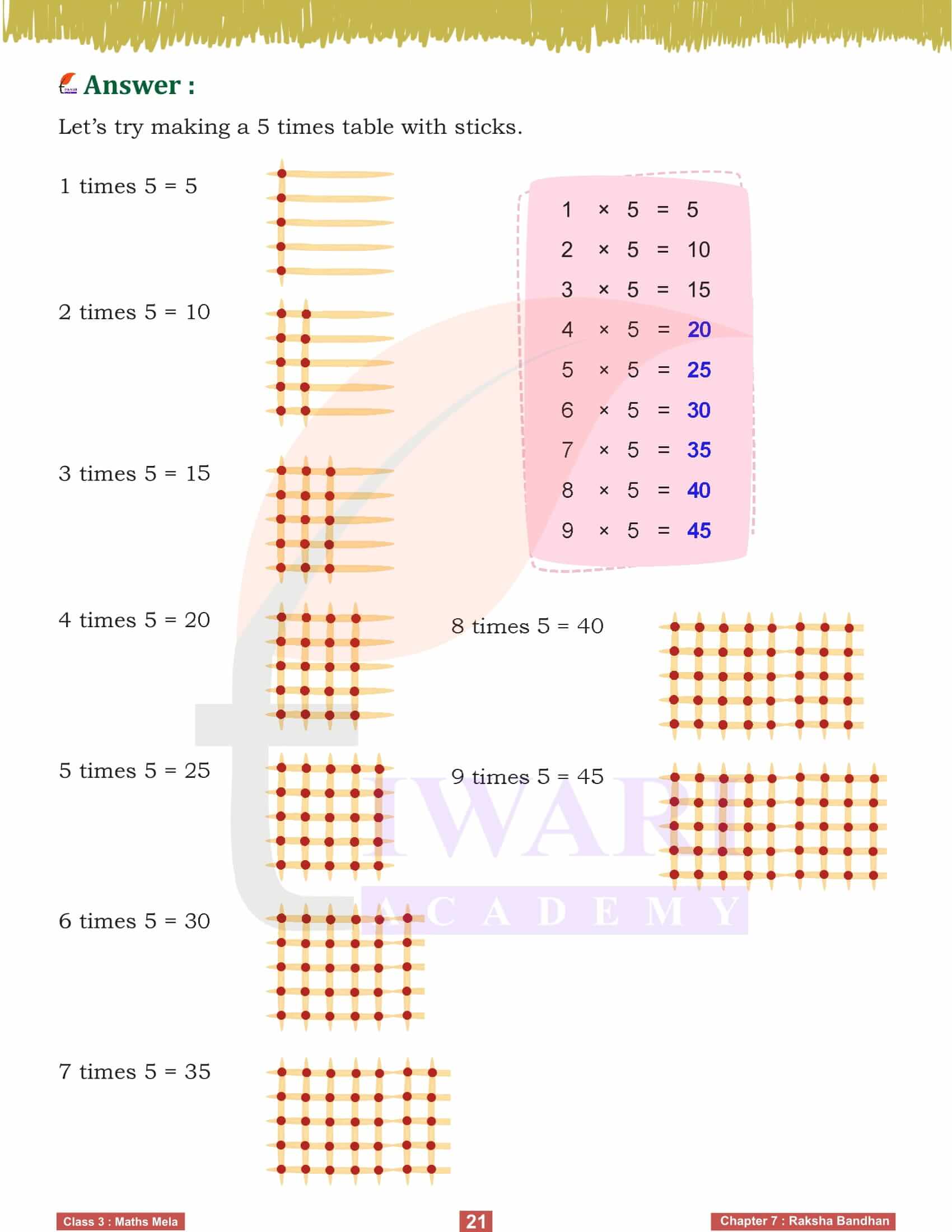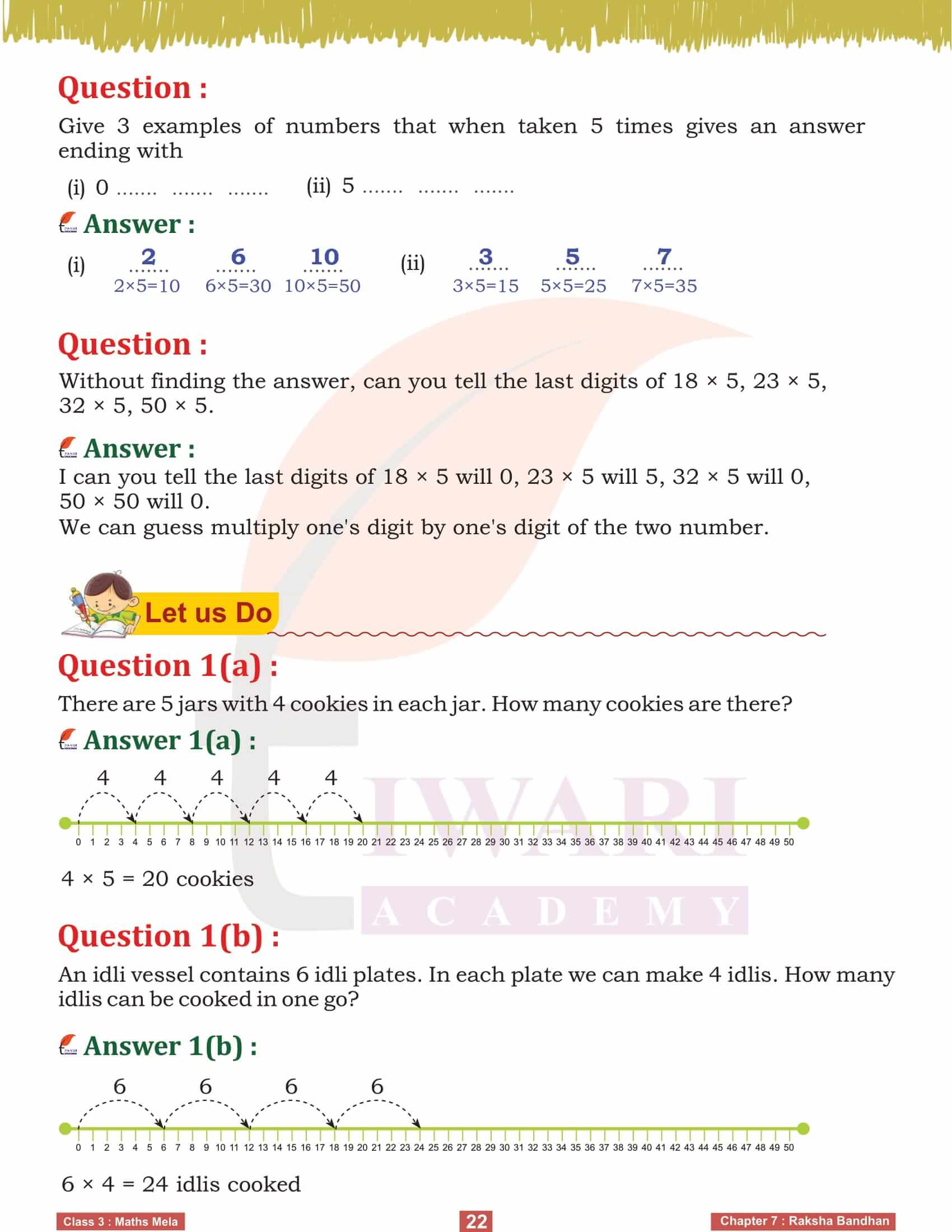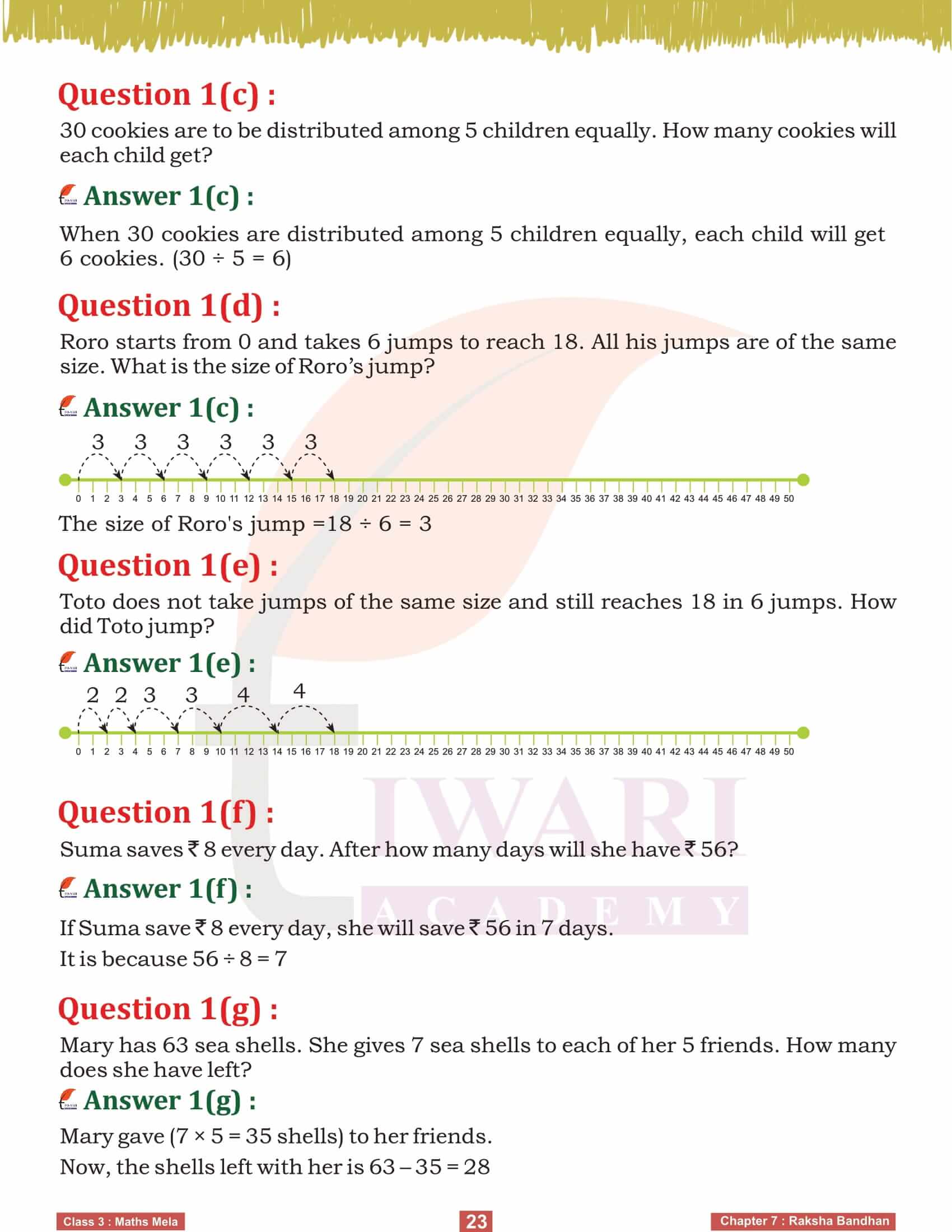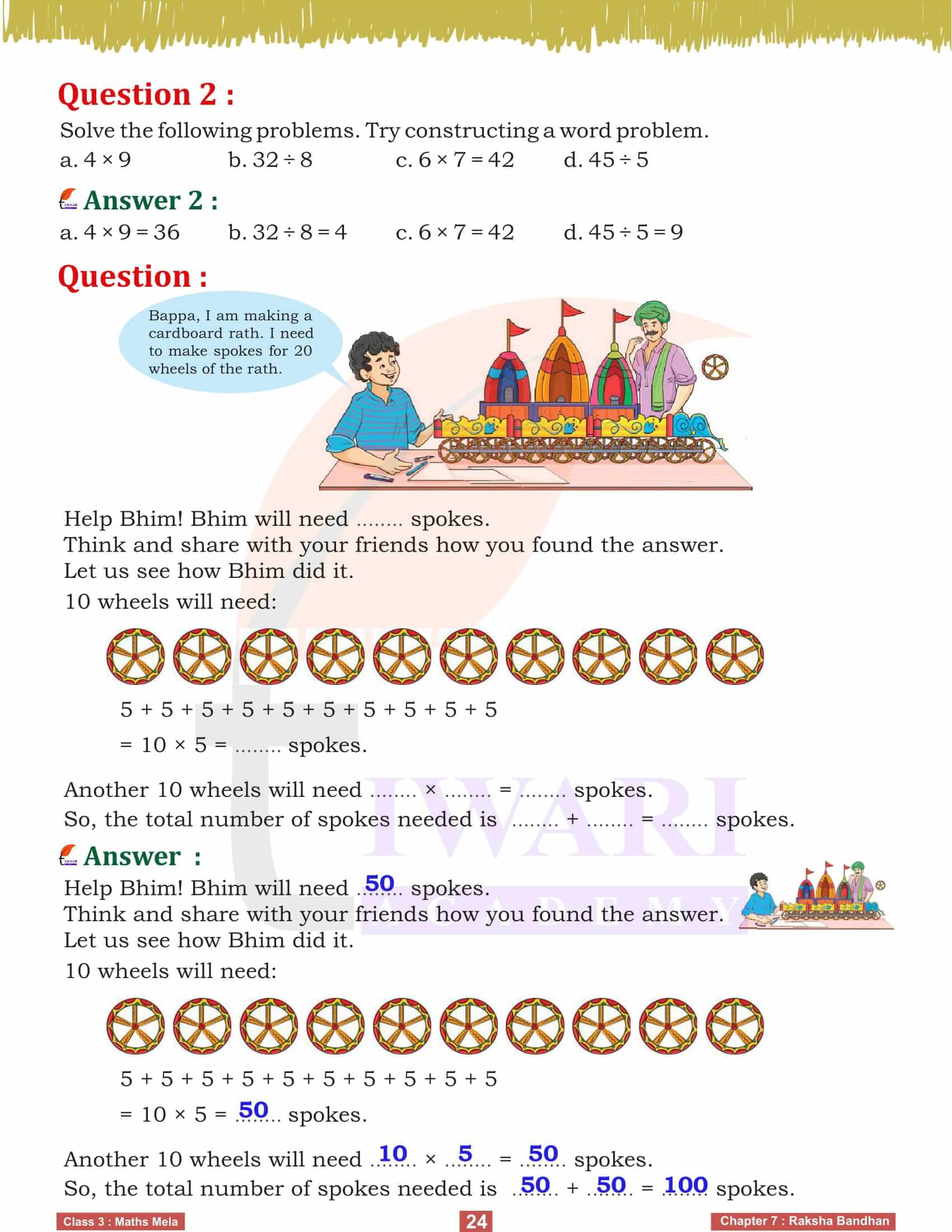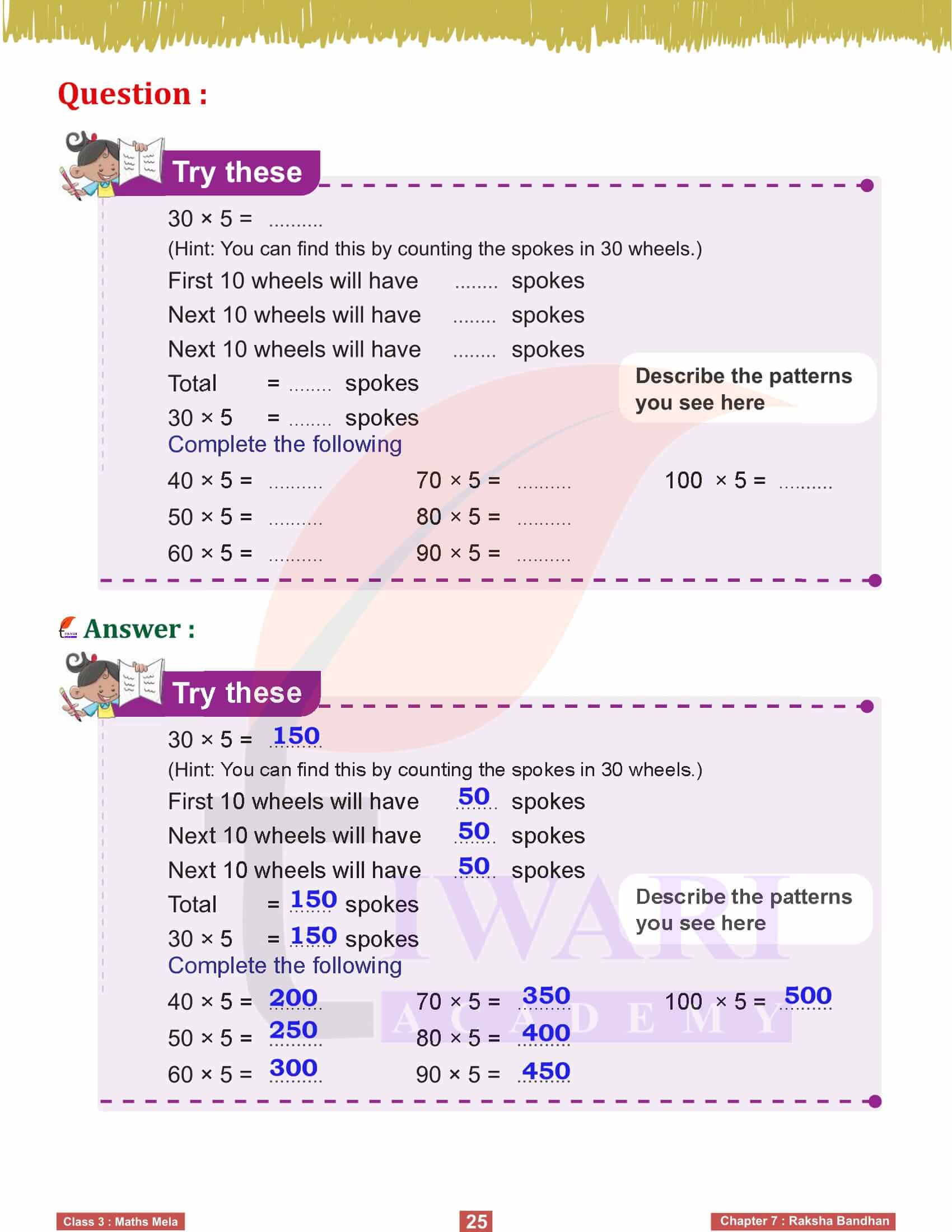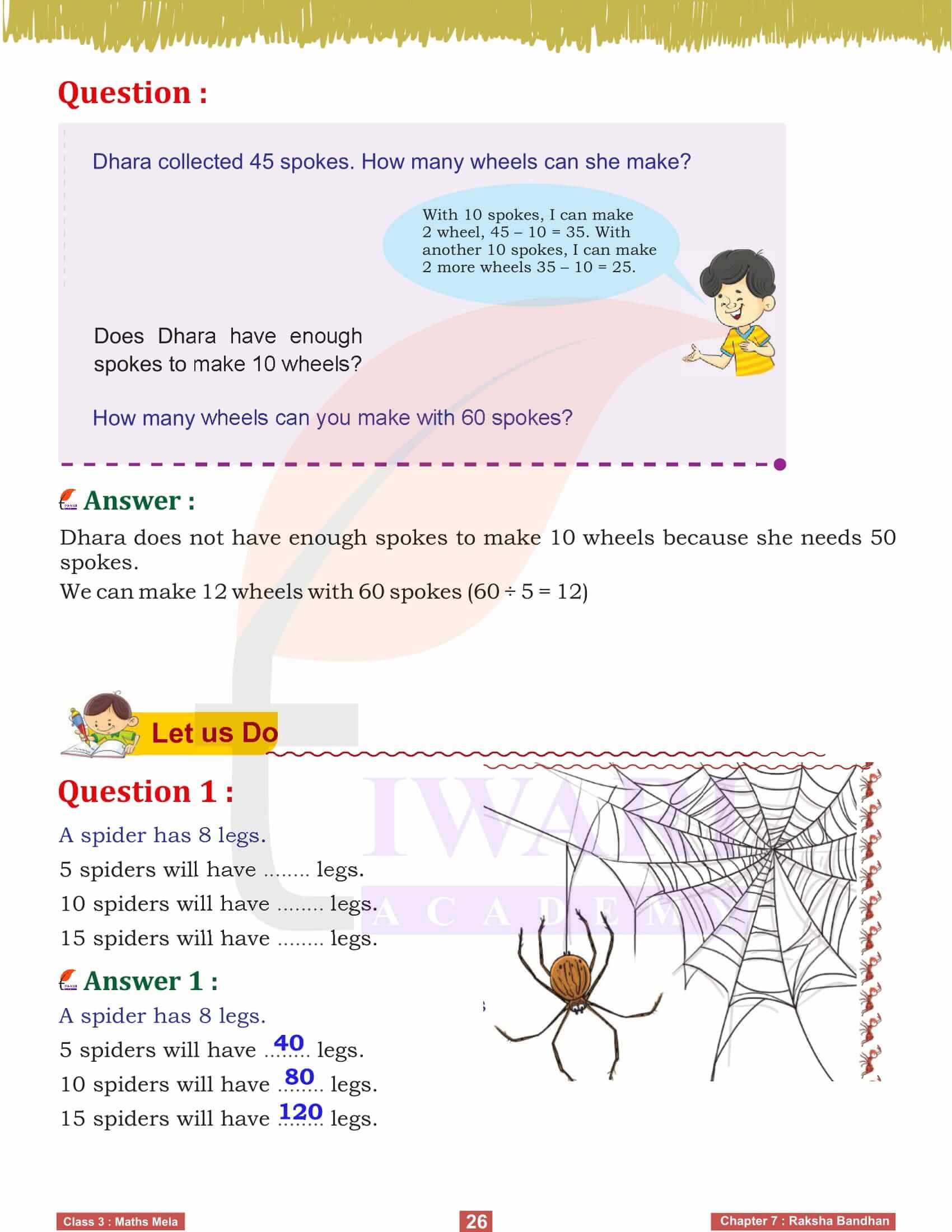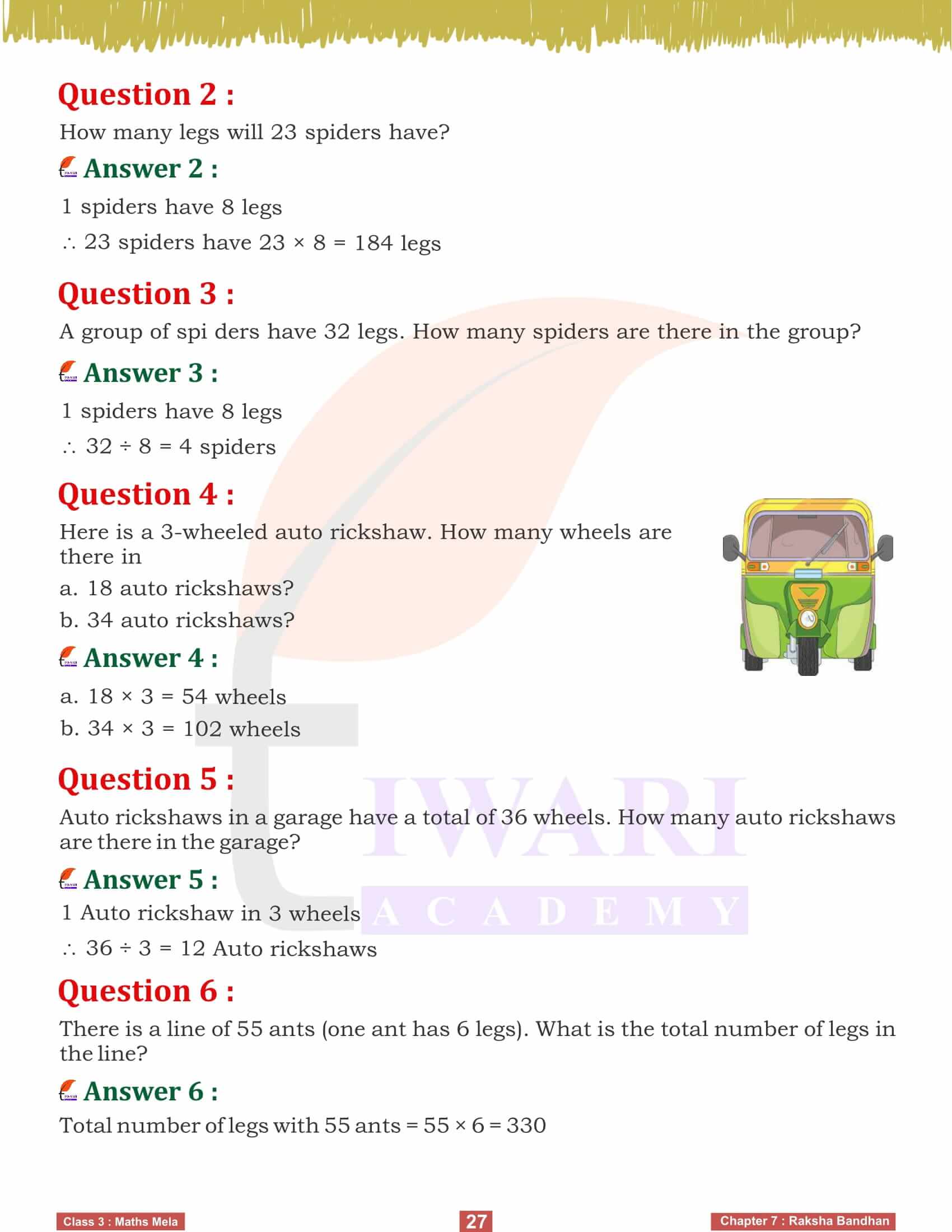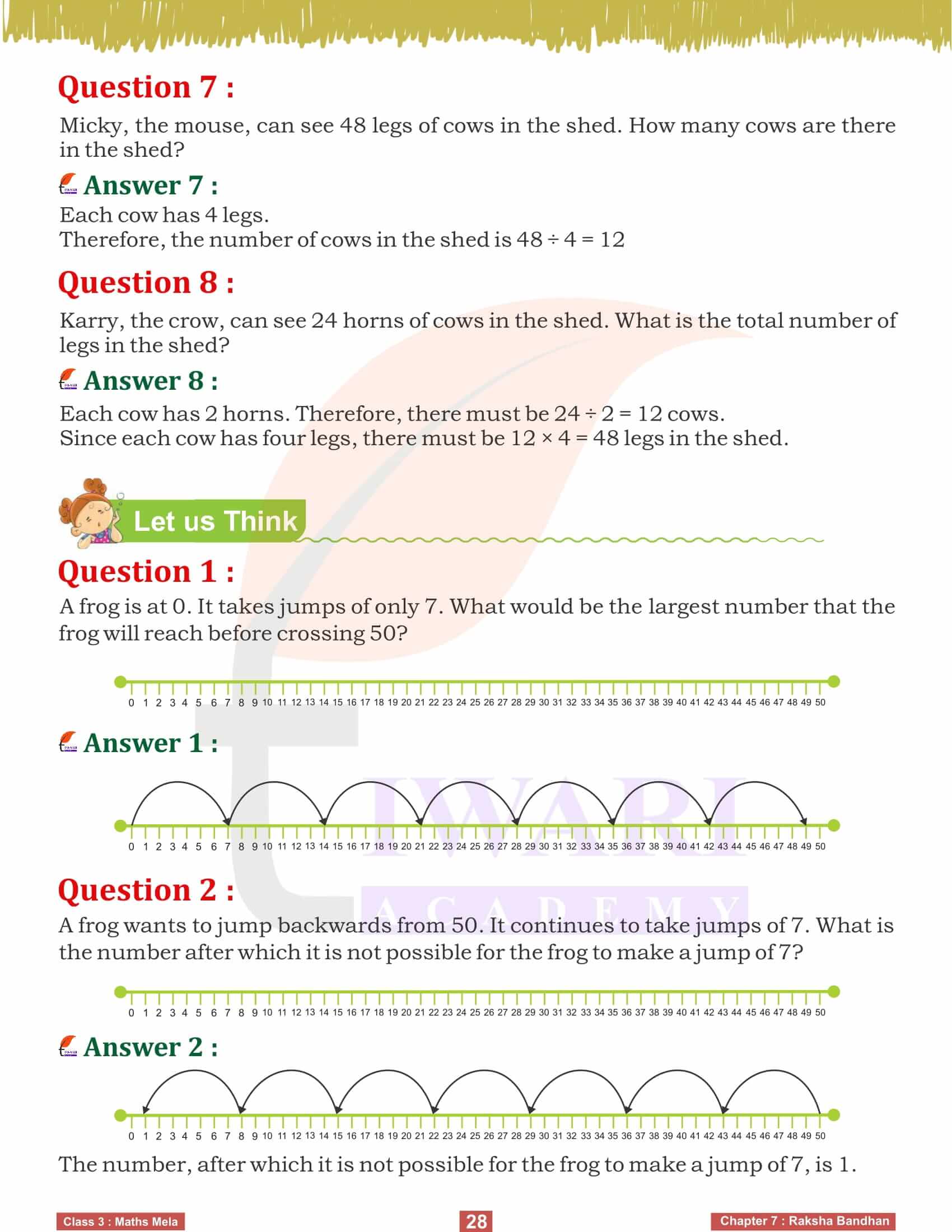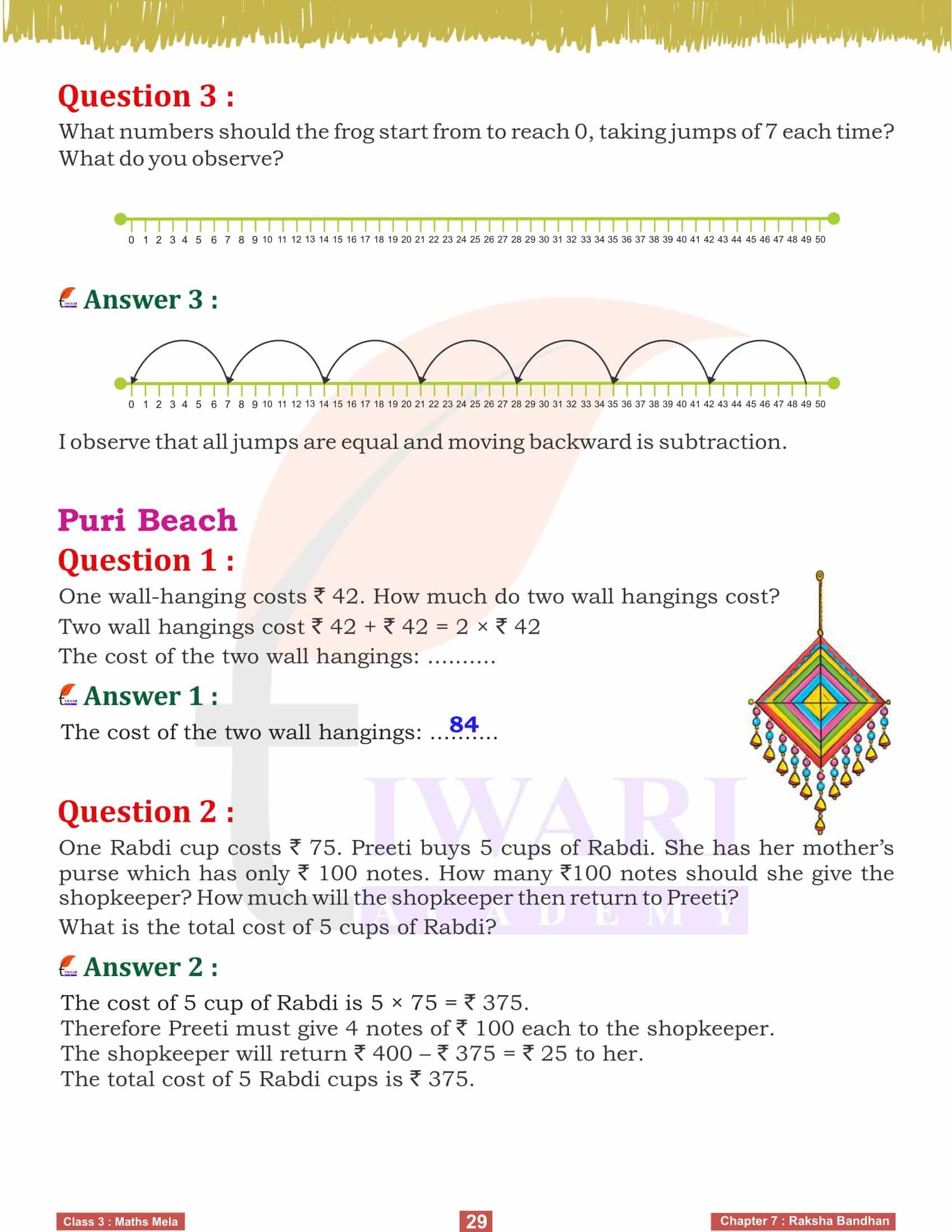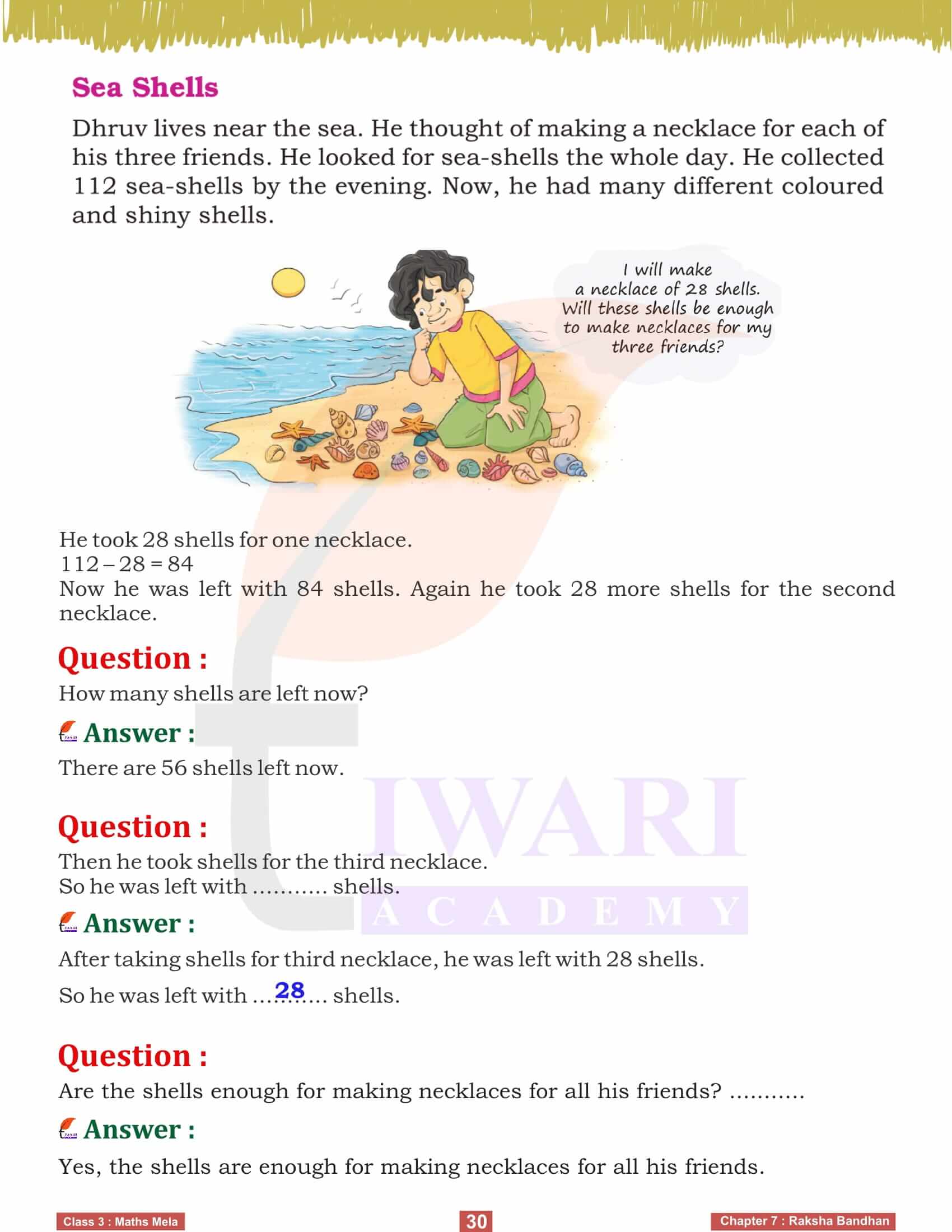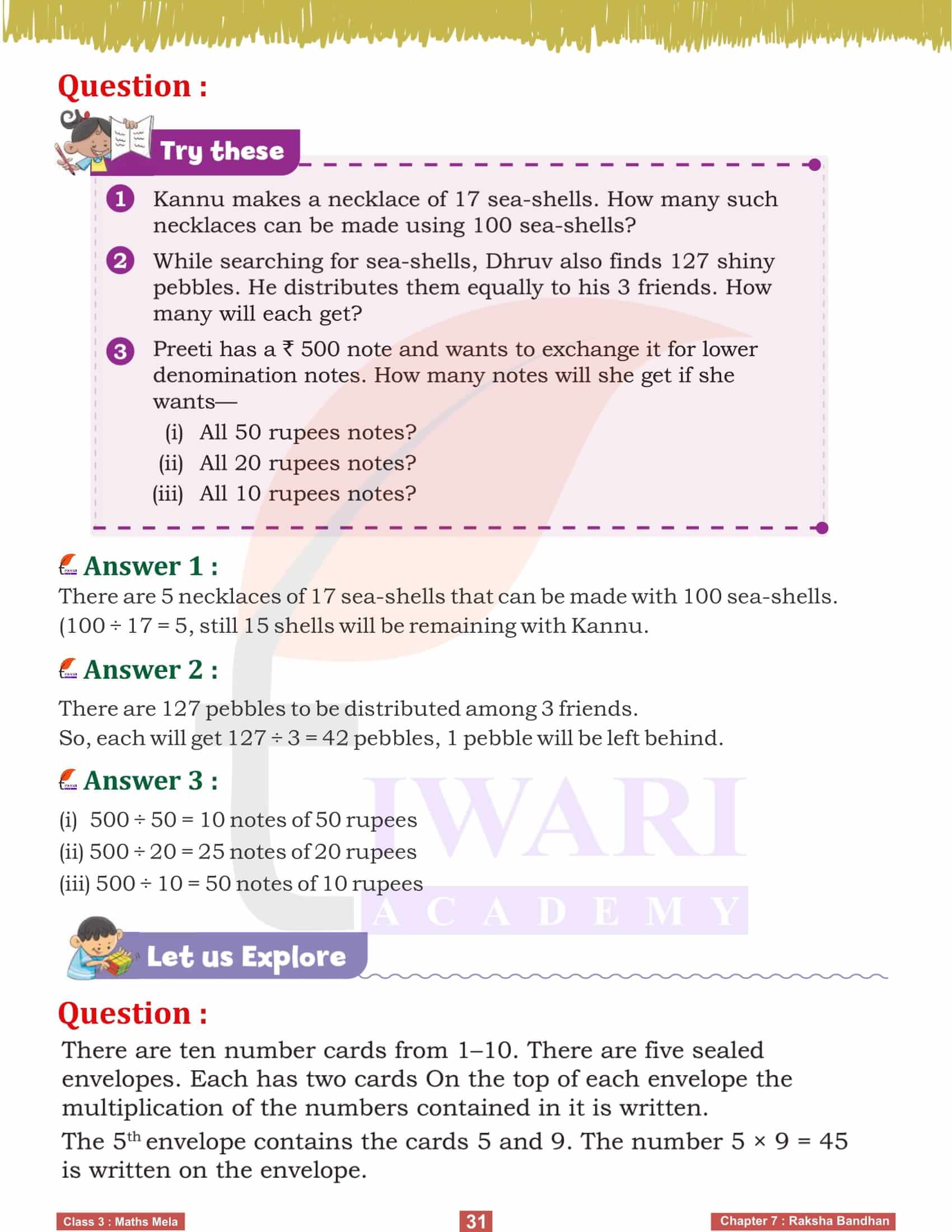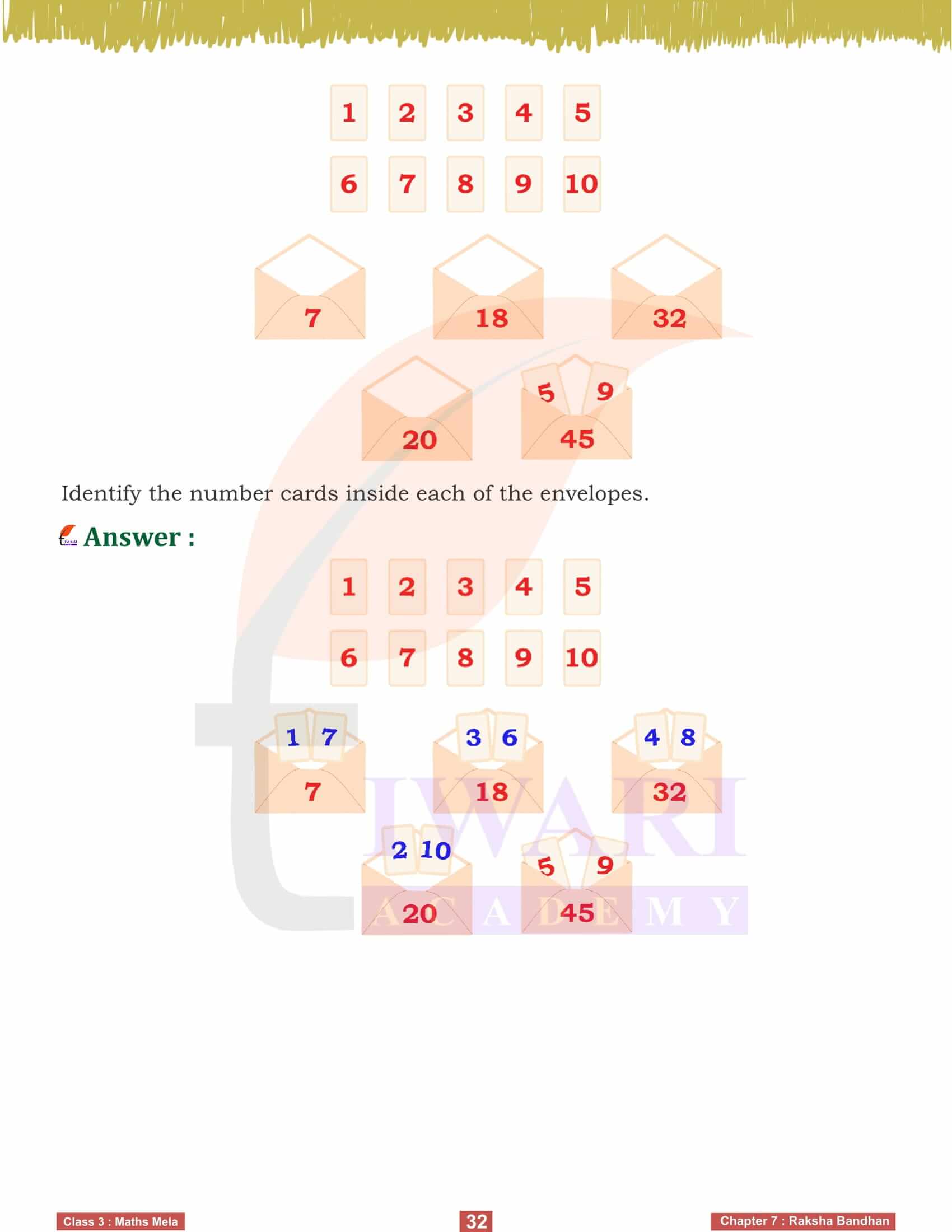NCERT Solutions for Class 3 Maths Mela Chapter 7 Raksha Bandhan in Hindi and English Medium revised for session 2025-26. Chapter 7 uses the festival of Raksha Bandhan to teach patterns and sequences. Students explore various patterns in Rakhi designs and learn to create their own. They also practice identifying and continuing sequences, enhancing their ability to recognize mathematical patterns in different contexts.
Tips and Tricks for Class 3 Maths
Class 3 Chapter 7 Raksha Bandhan Introduction
In this chapter, “Raksha Bandhan,” students are introduced to the festive and joyous occasion celebrated by Gopal and Dhara. This chapter is crafted to blend cultural learning with mathematical concepts, making it both engaging and educational. Anu will guide the students through a series of activities that revolve around Raksha Bandhan, where the emphasis is on counting, multiplication, and division through real-life scenarios and fun exercises. This approach helps students to grasp mathematical concepts in a practical context while also appreciating the cultural significance of the festival.
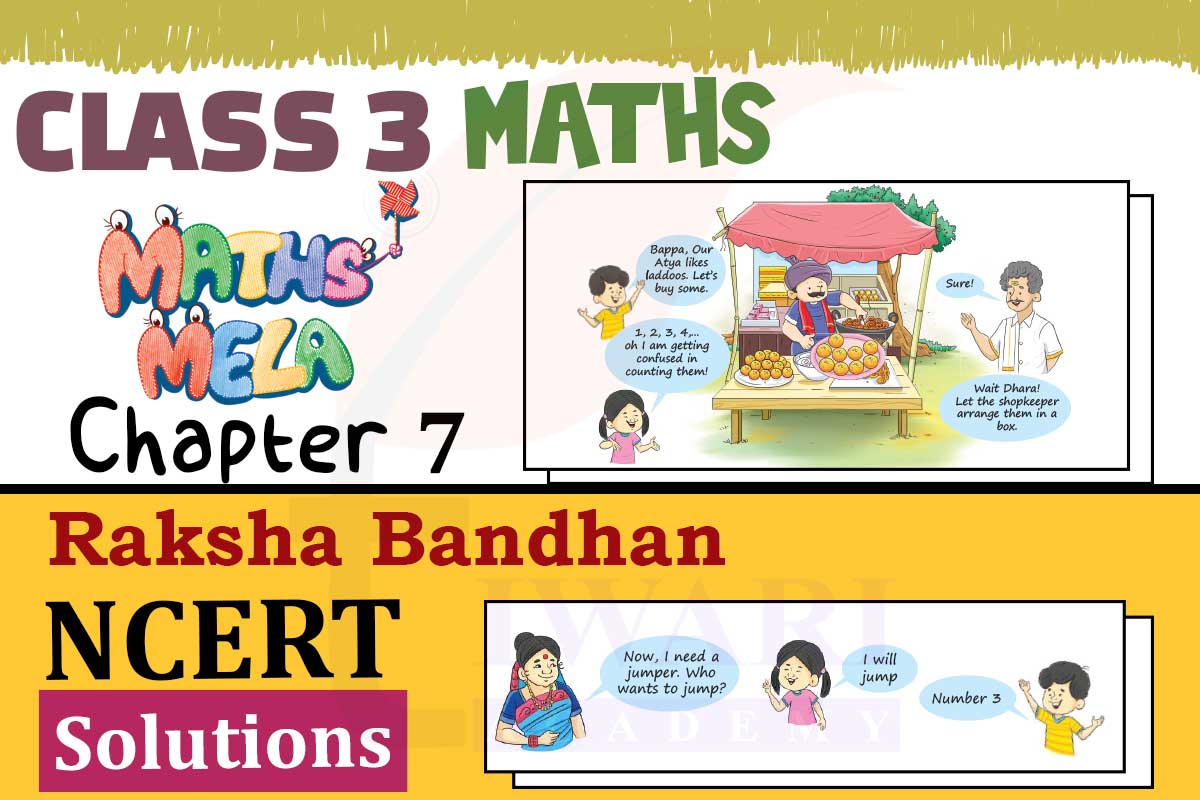
Counting Objects and Making Rakhis
The chapter 7 begins with Gopal and Dhara preparing for Raksha Bandhan by decorating their house and getting ready for the visit of their beloved Atya. Students are encouraged to observe Gopal’s house and count various objects like leaves, glasses, pomegranates, and flowers. This activity helps reinforce counting skills. The children then learn to make Rakhis, requiring them to count the number of flowers, threads, and beads needed for each Rakhi. For example, each Rakhi needs one flower, two threads, and four beads, and students calculate the total materials required for making multiple Rakhis.
Practical Application of Multiplication
Anu explains multiplication through practical examples such as the number of threads, flowers, and beads needed for multiple Rakhis. For instance, making five Rakhis requires students to calculate five times the number of each item. This part of the chapter emphasizes repeated addition as a foundation for understanding multiplication. Students also solve problems involving the distribution of sweets, like laddoos, where they practice dividing 18 laddoos equally among nine people, helping them grasp basic division concepts.
Exploring Division Through Real-Life Scenarios
The chapter 7 of 3rd mathematics includes activities that explore division in real-life scenarios, such as distributing kaju katlis and pedas among friends and family members. Anu uses these exercises to show how division works practically. For example, distributing 20 kaju katlis equally among five people or dividing 15 pedas among five friends helps students understand how division distributes items evenly. This section reinforces the relationship between multiplication and division and encourages students to visualize and solve division problems.
Skip Jumping Game and Multiplication Tables
The chapter 7, in class 6 Maths Mela, introduces a fun skip jumping game to teach students about patterns in multiplication tables. Dhara and Gopal play by jumping on a number track, skipping a certain number of steps each time, helping them see patterns in multiplication. For instance, skipping by threes shows the sequence 3, 6, 9, and so on. This game helps students understand the concept of repeated addition and multiplication. They also practice constructing multiplication tables for different numbers and identify patterns in these tables.
Practical Exercises with Spiders, Auto Rickshaws and Frogs
Anu uses various examples like spiders’ legs, auto rickshaws’ wheels, and frogs’ jumps to further explain multiplication and division. Students calculate the number of legs for multiple spiders, the total wheels for several auto rickshaws, and how far a frog can jump with consistent jumps. These exercises help students apply their multiplication and division skills in diverse contexts, reinforcing their understanding through repeated practice and visualization.
Creative Activities and Division with Large Numbers
Class 3 Maths chapter 7 concludes with creative activities such as making necklaces with sea-shells and solving division problems using repeated subtraction. Anu encourages students to solve problems involving large numbers by breaking them down into simpler, manageable parts. For example, using repeated subtraction to determine how many necklaces can be made from a certain number of sea-shells or how many notes of different denominations can be exchanged for a larger note. These activities ensure that students understand division deeply and can apply it in various situations.
In summary, Chapter 7: Raksha Bandhan, is designed to teach class 3 students key mathematical concepts through engaging, culturally relevant activities. By integrating counting, multiplication, and division into the festive context of Raksha Bandhan, Anu helps her students grasp these concepts in a fun and memorable way. This approach not only enhances their mathematical skills but also fosters an appreciation for cultural traditions.
Related Links
